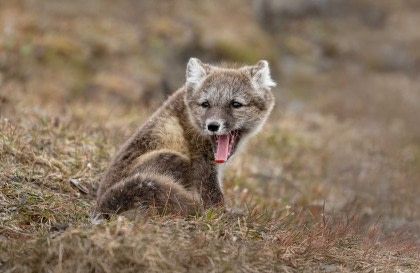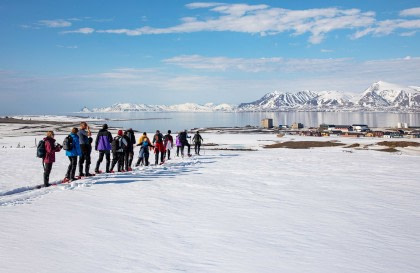Ever since discovering Svalbard on the map a little over a year ago, I had felt a desperate need to explore this Arctic archipelago for myself.
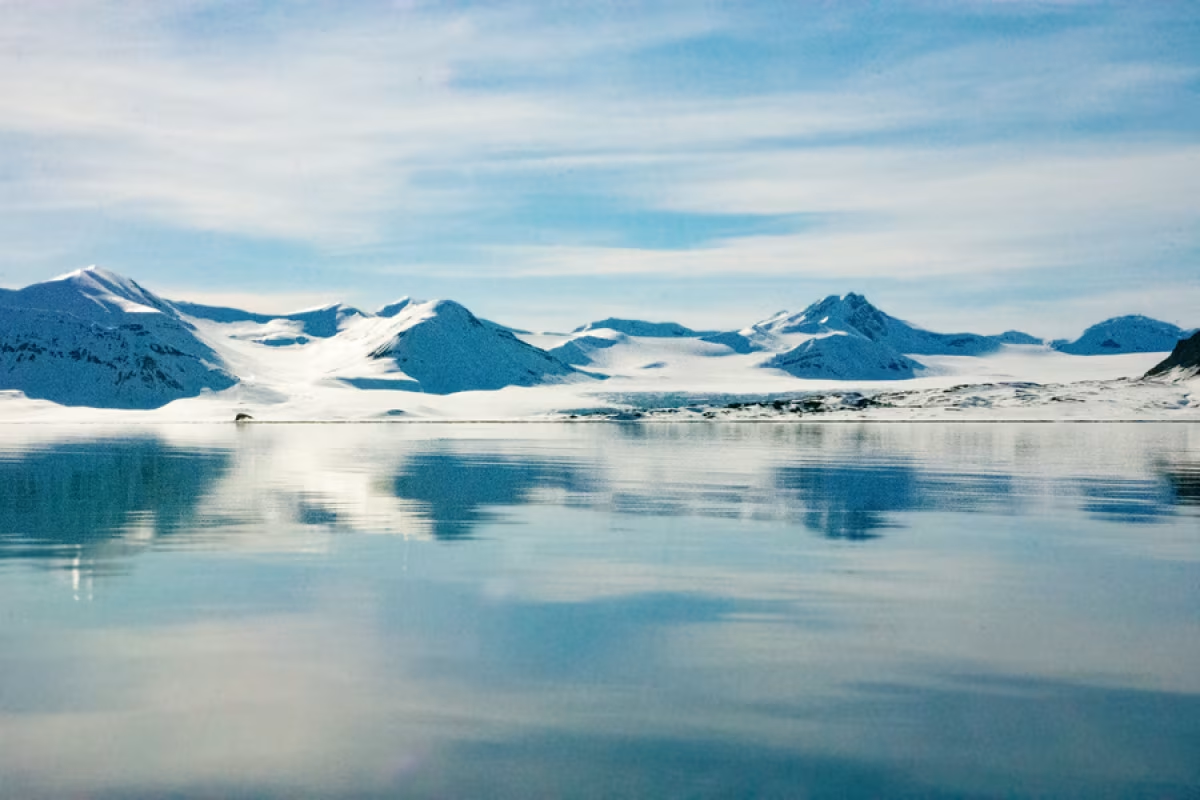
It seemed like a distant and almost unattainable dream, however, with expedition cruise prices being what they are, and I had no idea an opportunity would present itself so soon.
So when the “spontaneous travel agent” special from Oceanwide Expeditions popped up in my inbox on May 1, 2019, I didn’t hesitate. I would be embarking on a five-day voyage on the s/v Rembrandt van Rijn. Not only was I going to be taking a polar expedition cruise, but on a tall ship – a three-masted schooner.
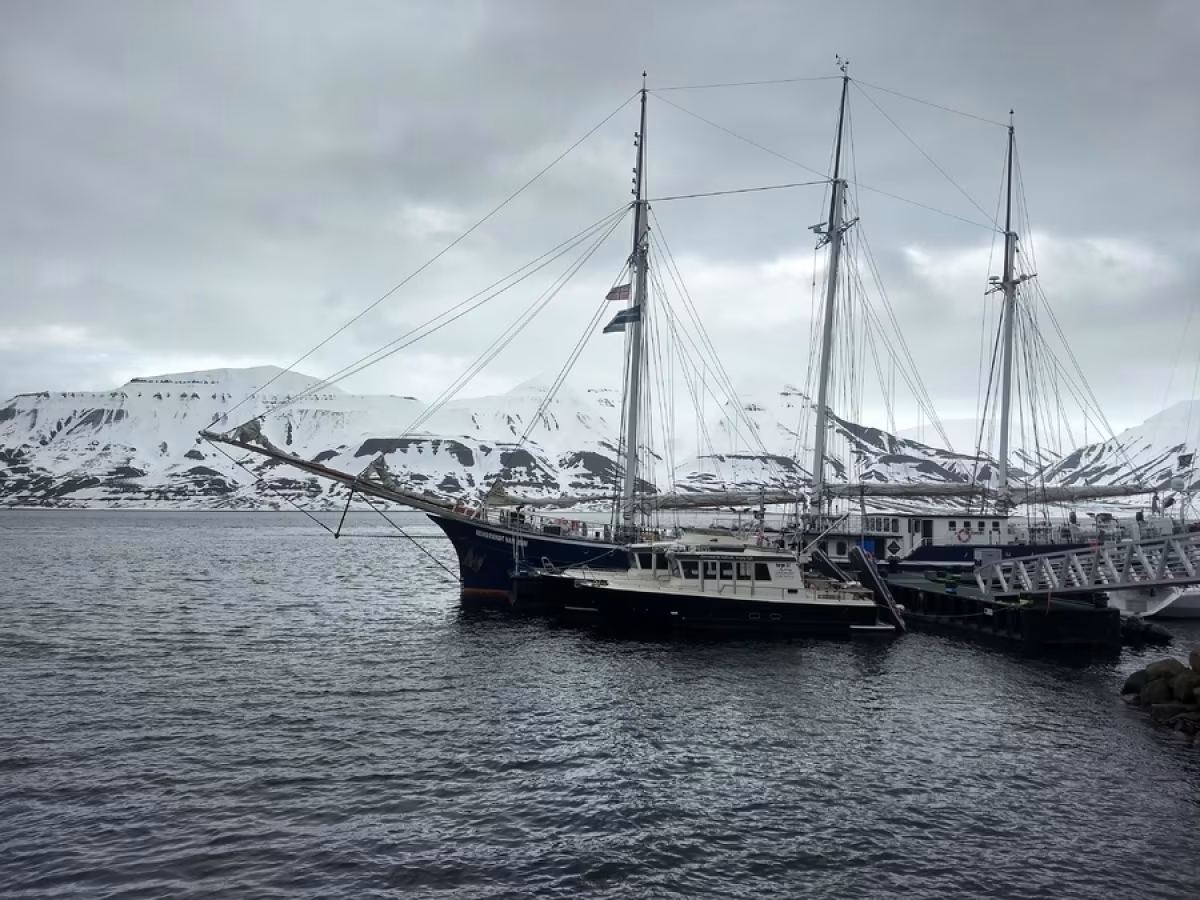
It couldn’t get any better.
I don’t know what drew me to this cold and desolate part of the world. Perhaps it was the extreme contrast to what I was used to. Residing in Fort Lauderdale, Florida, I’m essentially a warm-weather being, and the slightest drop in temperature has me running for a sweater.
I certainly didn’t own much in the way of winter attire, so with little under a month to prepare, gearing up was definitely going to be a challenge. Thank goodness for online shopping! I spent countless hours ordering and returning items until I hoped I had exactly what I needed – thermal underwear, insulate waterproof boots, mittens, woolly hat, waterproof and insulated jacket and pants, etc.
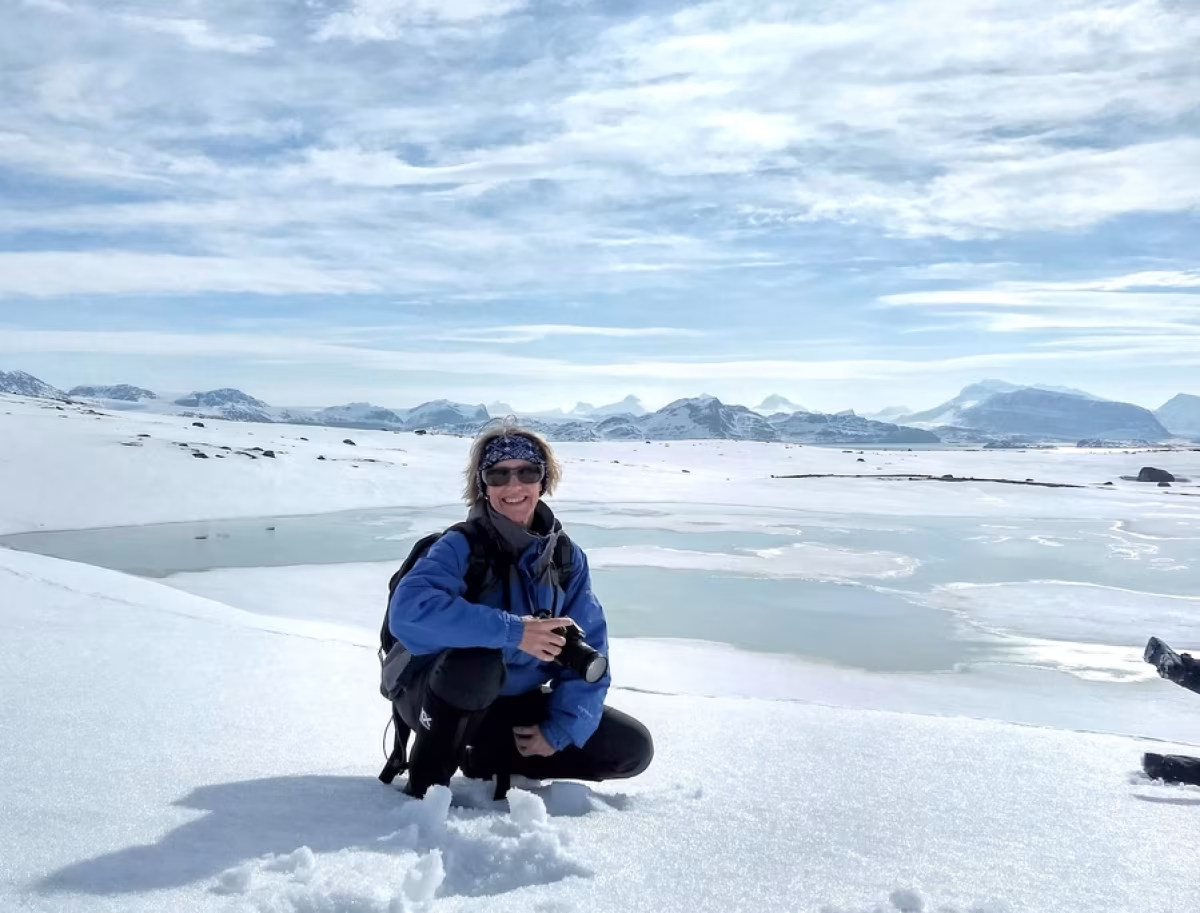
Since I would be flying via the Norwegian mainland, I felt I just had to see the fjords. This had always been on my bucket list, and I’d also read somewhere that if you go to Norway and don’t see the fjords you “should be shot.” I certainly didn’t want to be shot.
With just 36 hours in Oslo, prior to flying to Longyearbyen, seeing the fjords was also going to prove challenging. Every trip from Oslo to the fjords seemed to involve an overnight stay somewhere, but after a great deal of research, I found a very ambitious solution.
Upon arriving in Oslo, after a grueling 16-hour flight from the US, I would take the overnight train to Bergen, from which I would catch a ferry via Sognefjord to Flåm. From there I would take the Flåm Railway (apparently one of the most beautiful railway journeys in the world) via Myrdal, back to Oslo – all in just under 24 hours.
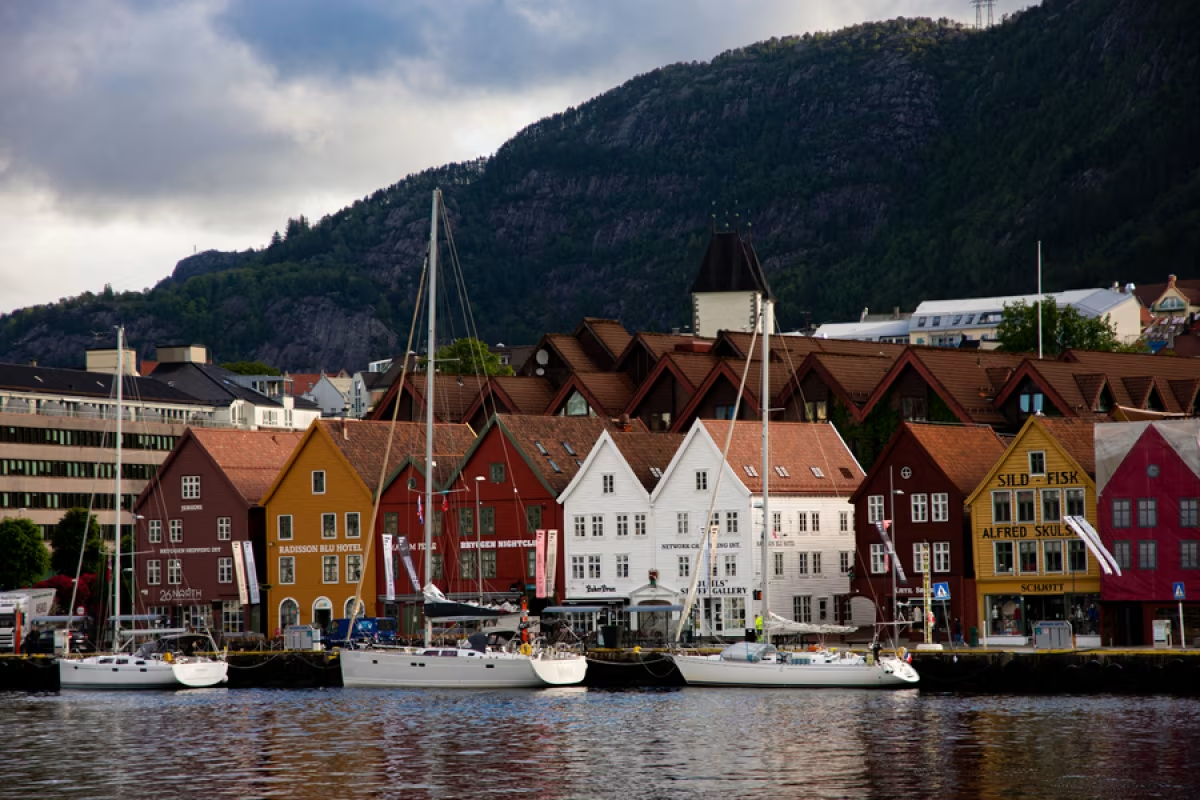
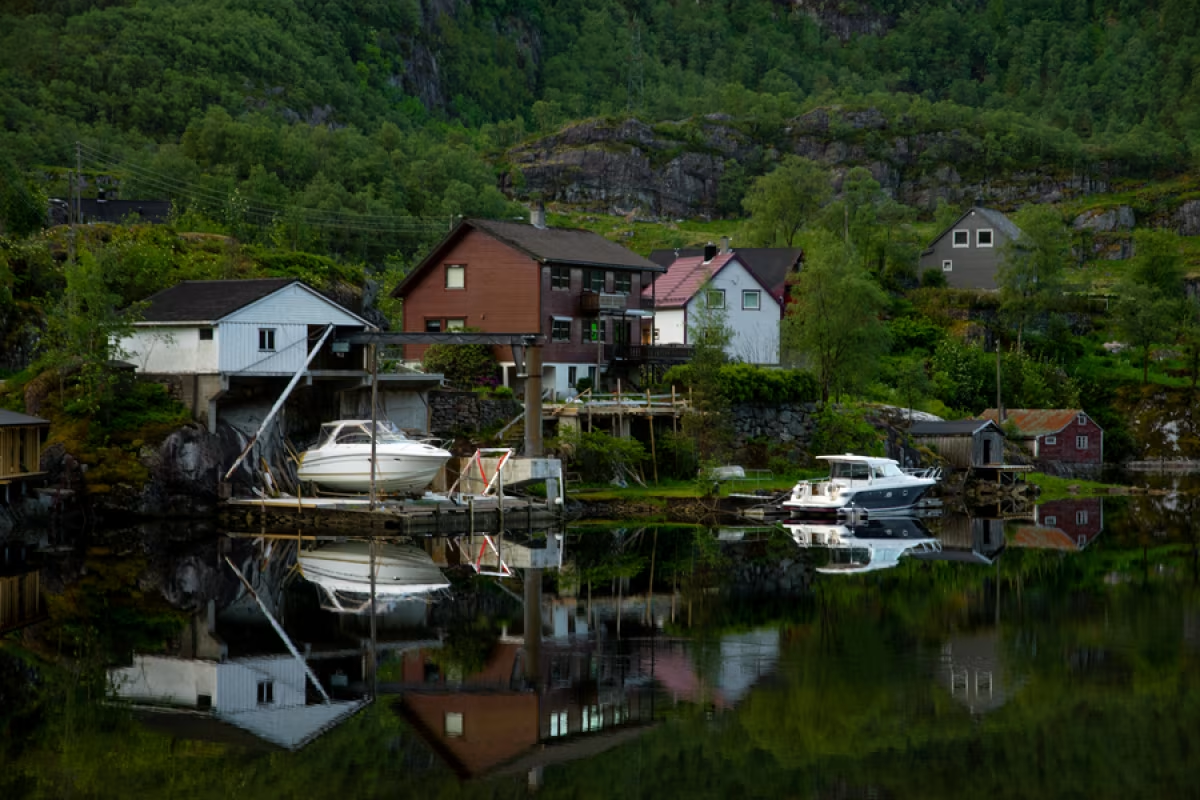
Besides getting hopelessly lost in Bergen and making the ferry with only minutes to spare, this all ran surprisingly smoothly. I even made a few great friends along the way.
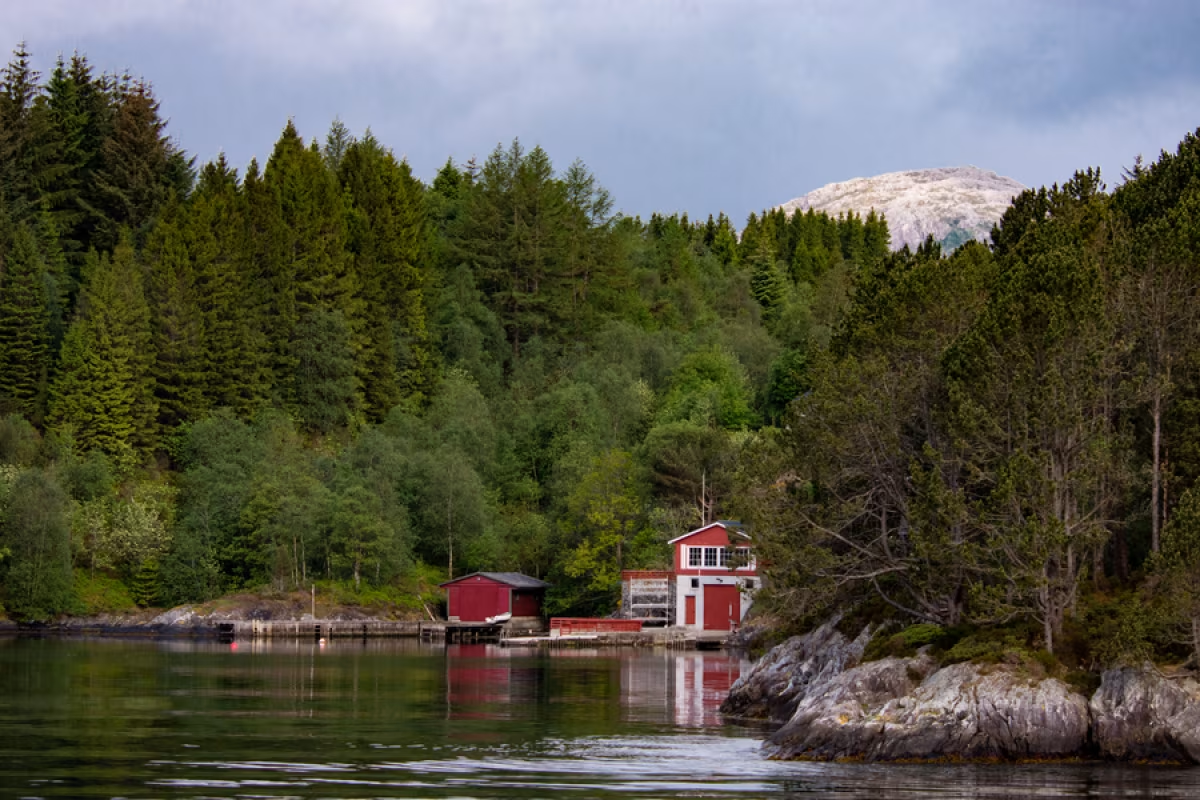
The overnight train journey to Bergen took us high up into a desolate snow-covered mountain region, and then back down again into verdant lake-filled valleys. The boat journey through the fjords was breathtaking, ending in the picture-postcard town of Flåm, where we had around three hours to explore the numerous and rather pricey gift stores before taking the Flåm Railway back to Oslo.
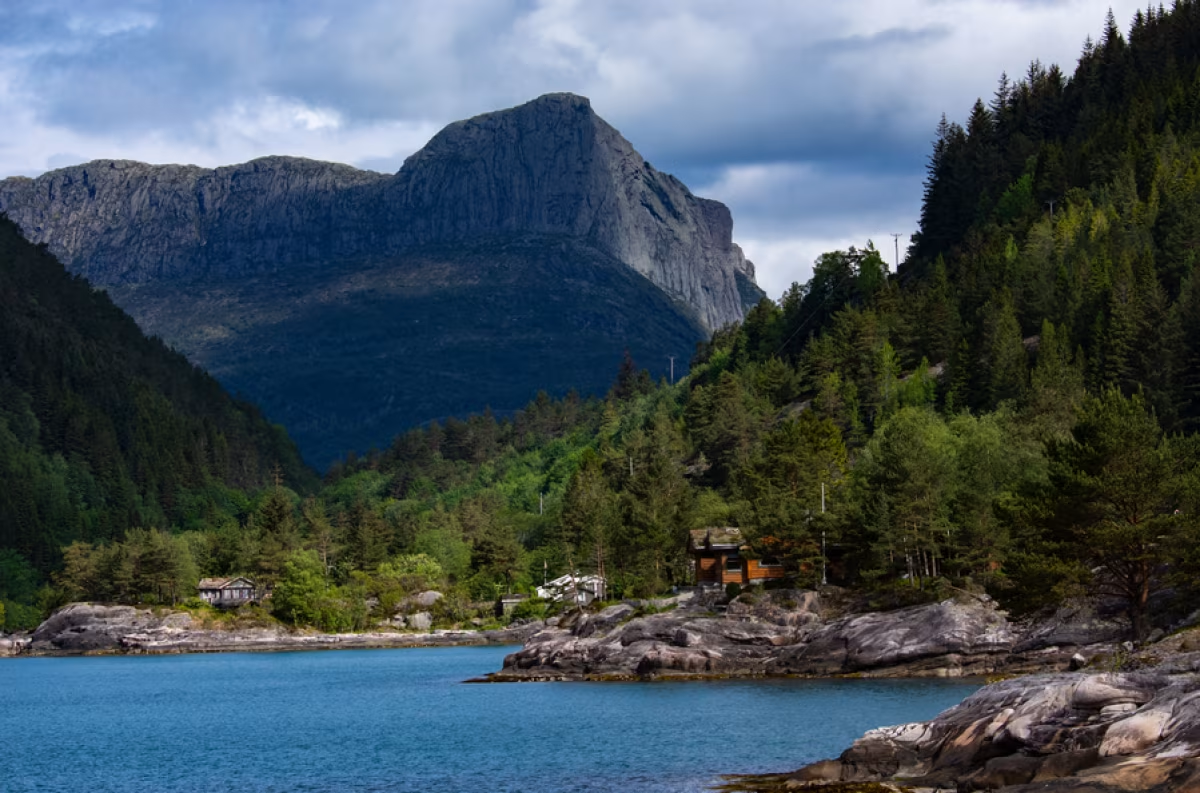
The train journey back to Oslo once again took us high into the mountains, making a camera stop at Kjosfossen Waterfall, where it began to snow. Coming from Florida, the sight of snow was very exciting indeed, if rather frigid. This massive thundering waterfall, the most visited in all of Norway, actually has a small power station, which is used to power the Flåm Railway.

Upon arriving back in Oslo, I had to make my way on foot to my hotel. By this time I was absolutely shattered, having barely slept or eaten in almost 48 hours.
After dragging my extremely cumbersome bags down the street and getting caught in a downpour, I eventually made it to my hotel around 11pm. At this hour it was too late to get dinner, and the vending machine wouldn’t take my card. Too exhausted to pack, I set my alarm to 4am to allow me time to make my flight to Longyearbyen at 8:40am. It was a pretty sorry state of affairs.
All kitted out in my cold-weather attire, I made my way back to the airport on May 29. I headed to the first restaurant I could find and splurged on a buffet breakfast. There’s nothing that a full stomach can’t cure, and it had me feeling like a brand-new person.
Now I was truly ready for the second leg of my journey and my real reason for being here – the Svalbard cruise. In three hours I’d be in the northernmost permanently inhabited town on earth, Longyearbyen.
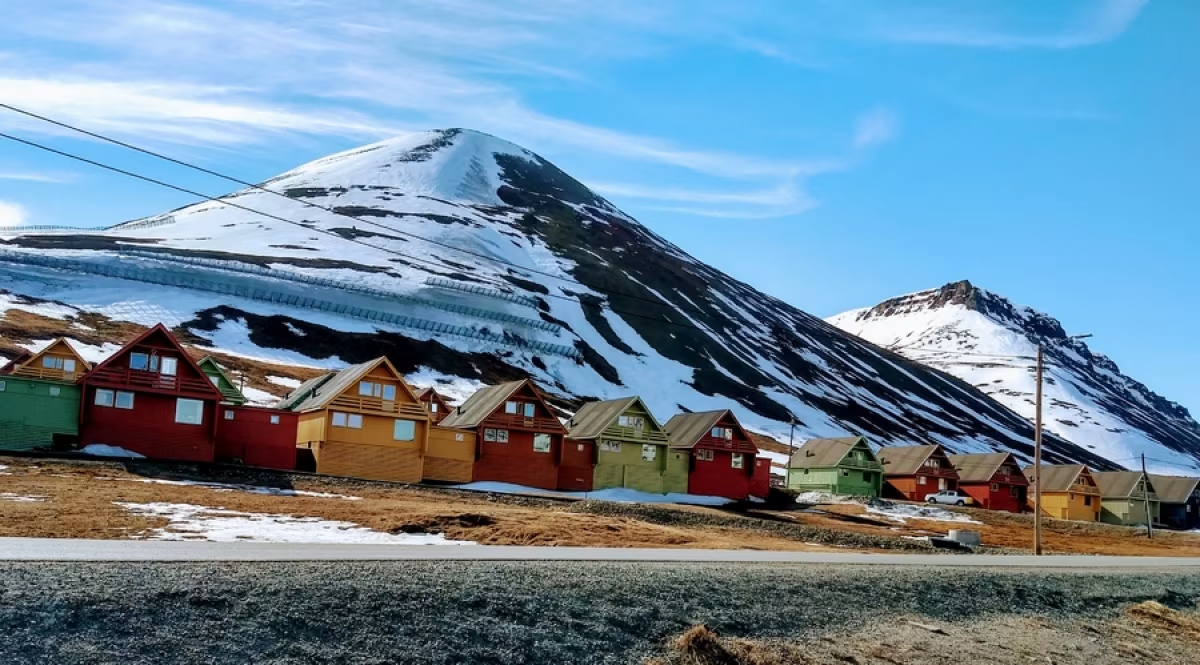
It was a pretty bleak, cold, cloudy day that greeted me in Longyearbyen, along with our guides, Eduardo and Jordi. I was informed that, apart from myself, there would only be a group of nine Chinese passengers onboard. Besides their group leader, Chen, I would be the only English-speaking guest. This was going to be very interesting, but with just 10 guests on board, I would most definitely have my own cabin – jackpot!
Since our flight arrived at 12:40pm and the embarkation time was 4:30pm, we were bussed into Longyearbyen for the afternoon. We were free to explore and make our own way back to the dock for embarkation.
Longyearbyen is not a pretty town but a working town, with a permanent population of around 2,000. It is the jumping-off point for all cruises and other Arctic adventures in this part of the world, and at this time of the year it’s bustling with people heading off on some exciting adventure, be it skiing, snowshoeing, dogsledding (yes they do this in summer as well, but with wheels), or wildlife watching.
Longyearbyen is home to the Svalbard Global Seed Vault, which serves as a crop backup facility, storing duplicates of seed samples from the world’s collections. Due to its location, with its permafrost and thick rock, the Vault ensures that the seed samples will remain frozen even without power. The Vault is the ultimate insurance policy for the world’s food supply.
Longyearbyen also has a few great restaurants, a coffee shop that sells some fantastic polar bear chocolates (great souvenirs), an interesting museum, galleries, a library, a polar university, and the world’s northernmost brewery, the Svalbard Bryggeri.
Now, I’m typically not a beer drinker and certainly don’t like drinking alone, but I had to make the exception here. I was pleasantly surprised. After a five-beer sampler – or was it six? – of some damn fine beer, I was ready for embarkation.
With sails set, Rembrandt headed up Isfjord towards Borebukta (Bore Bay), where our navigator, Captain Ali, planned to arrive sometime after dinner.
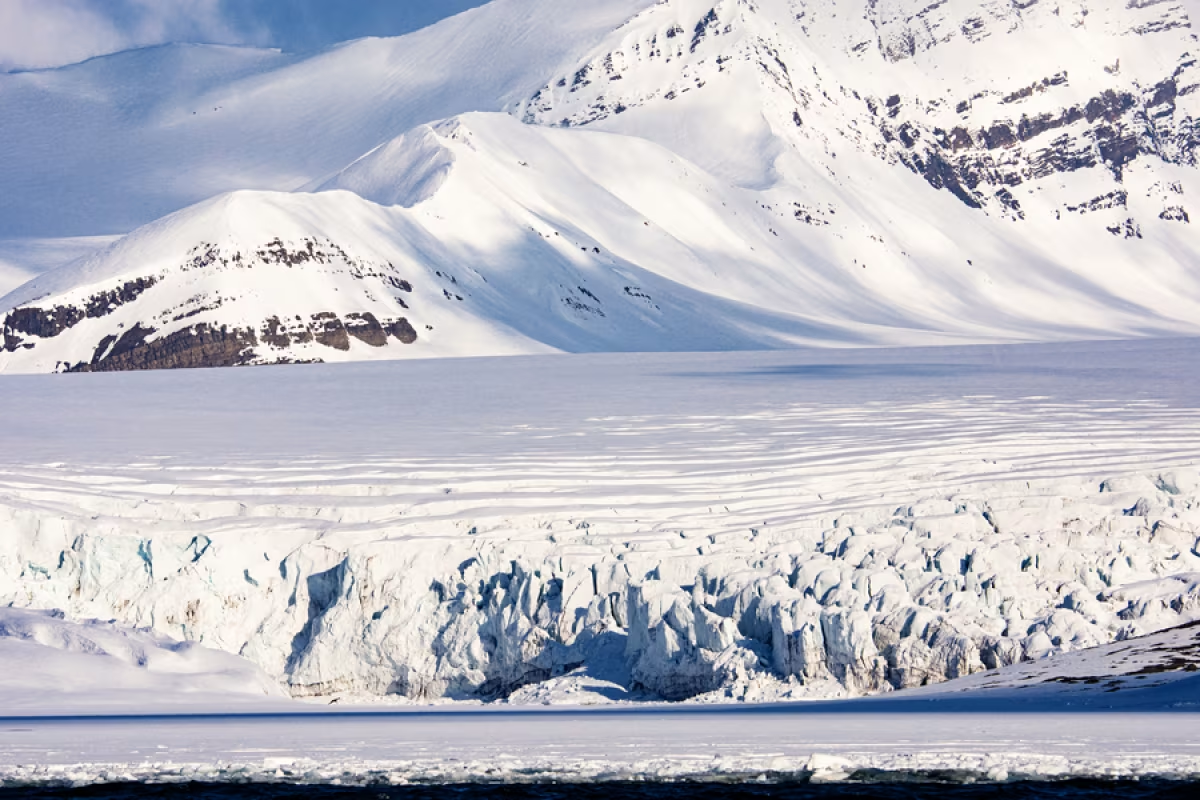
After introductions, we passengers had a safety briefing and drill given by one of the mates, Merle. It was then time for a delicious and highly anticipated dinner prepared by our chef, Charlotte, and served by our hotel manager, Bobby.
By this time I was more than ready for a good night’s sleep – my first in about 72 hours. I was a little concerned and intrigued by the midnight sun – at this time of year, the sun never sets in the Arctic – but I don’t think anything could have kept me awake that night. And it didn’t, thanks to porthole window covers and the lull of the boat gliding through the water.
Well rested, I greeted May 30 bright and early at 4am. (Waking up early, before the crowd, became my routine). The day greeted me with calm weather, crisp white snow, blue skies, and mild temperatures. What a glorious start to my first day on board!
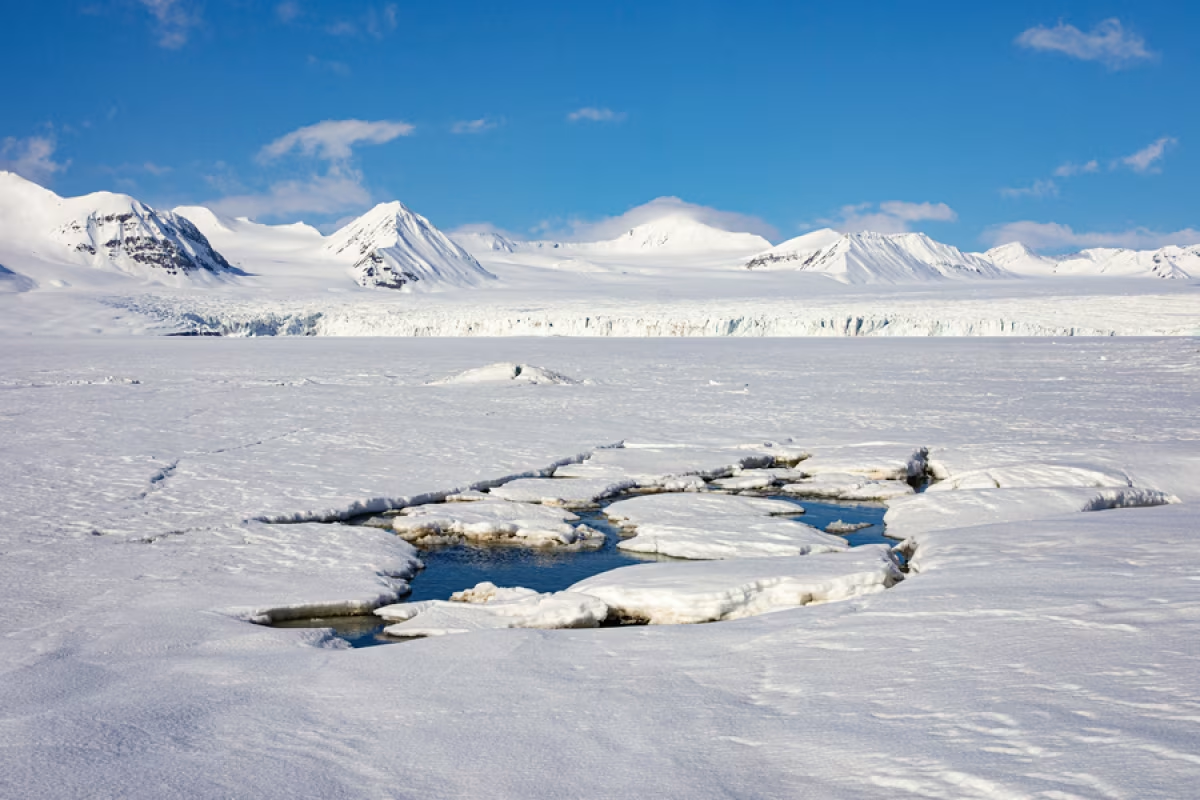
The area where we were anchored (78° 26.5’N 13°53.0’E) was part of the Northern Isfjord National Park. There, Borebukta is dominated by the Borebreen and Nansenbreen Glaciers, both of which have retreated considerably in recent times due to global warming. Borebukta and its glacier Borebreen are named after Boreas, the god of the cold and northerly winds in ancient Greek mythology. Meanwhile the neighbor, Nansenbreen, gets its name from Fridtjorf Nansen, the famous Norwegian explorer (1861-1930).
After breakfast and our morning briefing, we headed from our sheltered anchorage in front of Borebreem Glacier to our landing site, traveling by Zodiac. Then we enjoyed a little hike with snowshoes. Securing these took a little practice, but once you get the hang of it it’s pretty easy.
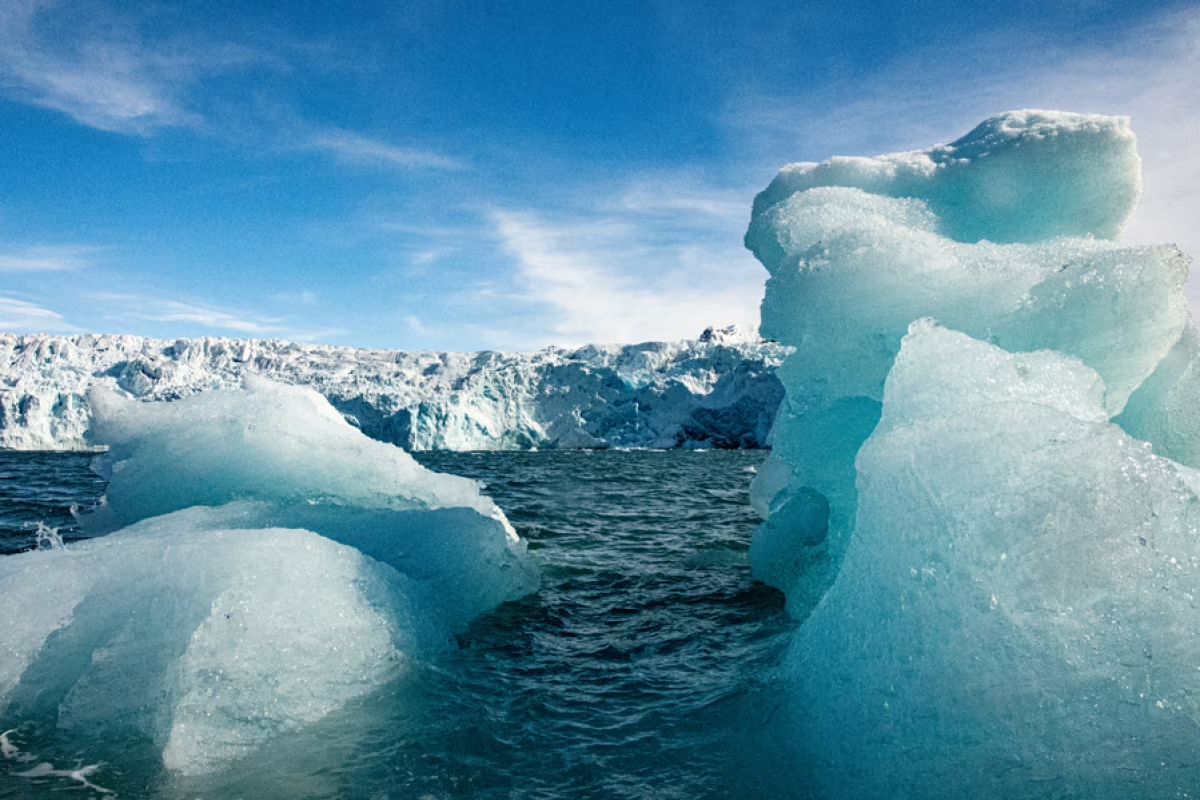
Being clever, I of course thought it would be a great idea to secure my mittens to the sleeves of my jacket with cord to avoid losing them. This backfired and my lifejacket, hiking poles, and snowshoes ended up getting completely tangled in the cord. It was a terrible mess, and I had to abort the idea and cut the cord.
Once everybody was ready, myself being last, we started our walk along the Boremorenen moraines, with splendid views of the Sylfjellet peaks to our north, reaching up to about 1,900 feet above sea level.
Excitement broke out as we discovered polar bear tracks in the snow, which our guides explained were pretty fresh. I think everyone’s hope on an Arctic cruise is to see a polar bear (but not too close) – mine certainly was.
In the distance we spotted a number of ringed seals resting on the ice. We decided to approach one by heading out across the frozen ice sheet, making sure to avoid potential crevasses and cracks. We managed to get pretty close before the seal disappeared through a hole and beneath the ice. Our first real wildlife encounter – pretty exciting stuff!
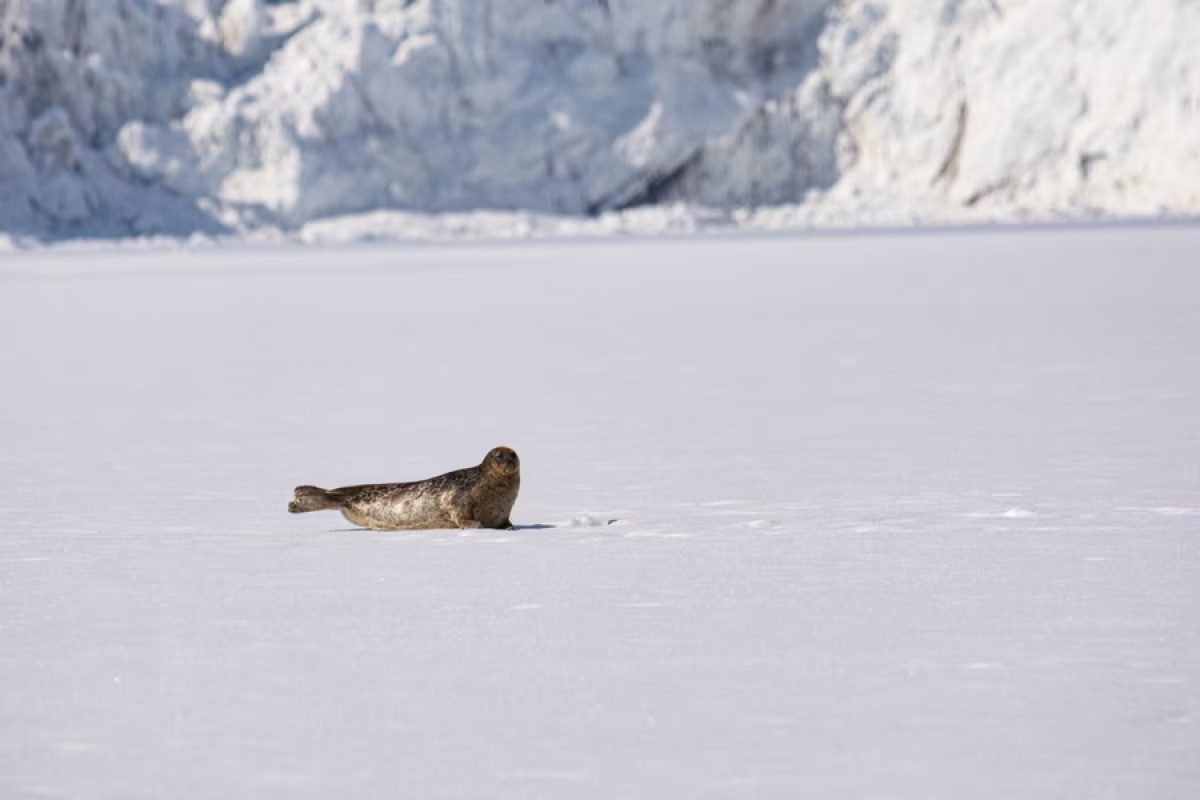
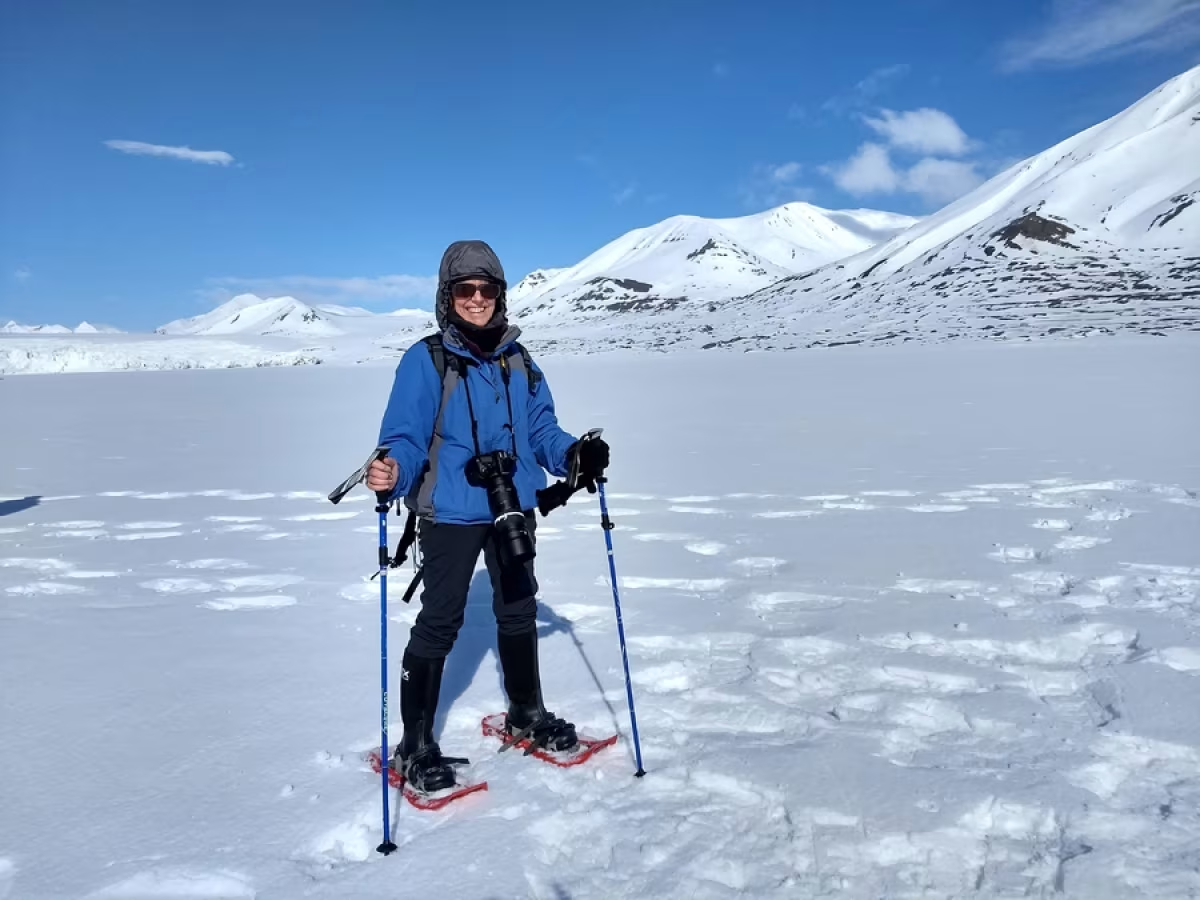
After a rather exhausting trek back to the Zodiac (these snow shoes take some getting used to), we headed back to the yacht for a well-deserved and delicious lunch prepared by our talented chef, Charlotte.
After lunch the weather deteriorated slightly and the wind picked up, providing perfect sailing weather yet again. We heaved anchor and all helped out setting the main sail, the schooner, and the staysail – although I’m not sure if we were more hinderance than help.
Heading out of Isfjord, we left the spectacular Alkhornet Mountain to our starboard side and proceeded north along Forlandsundet (the channel between the islands of Prins Karls Forland and Spitsbergen) to Kongsfjord. We were able to sail well into the night before having to turn on our engines. What a splendid day!

Once again I slept like a log, waking in the early hours of May 31 to another near-perfect day (temperature 39°F – 42°F, position Ny London, 78° 50'N 12° 00'E). Most of the early morning was spent heading up Kongsfjord, a six-mile wide fjord that cuts 15 miles into the west coast of Spitsbergen at an approximate latitude of 79°N.
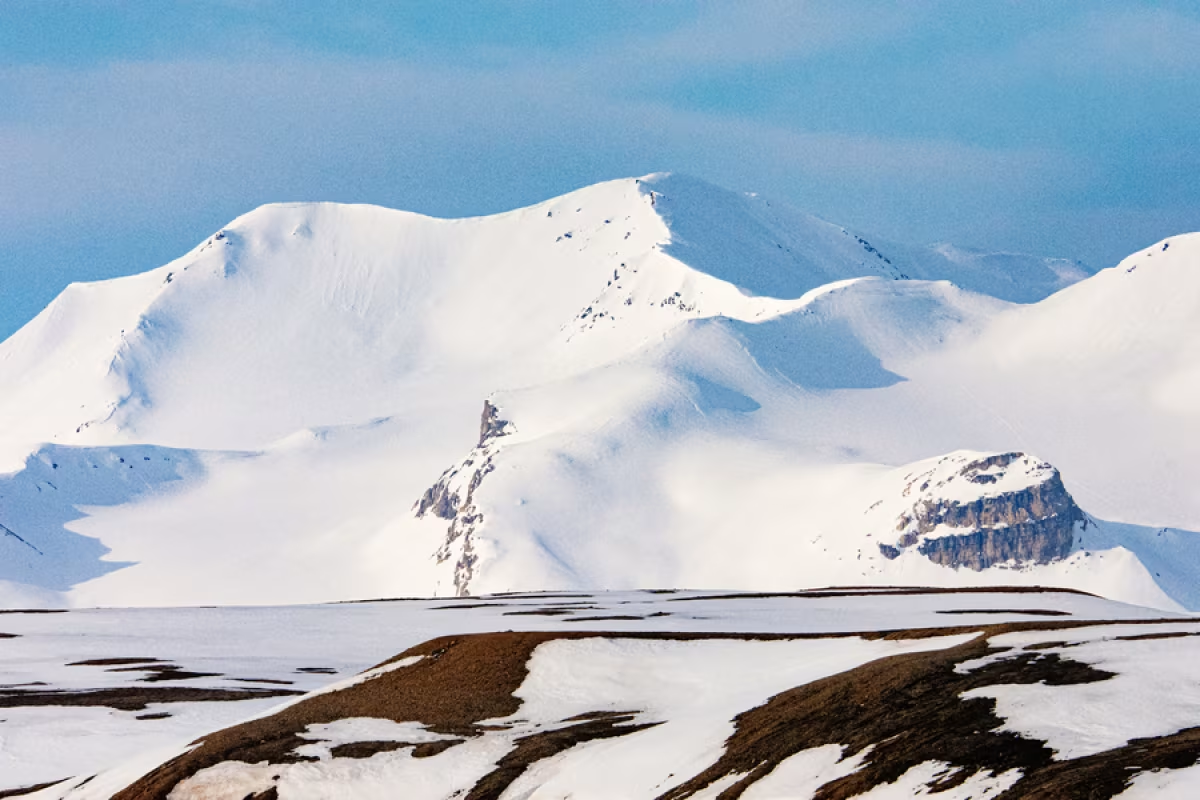
I spent my morning scouring the shoreline for wildlife with my binoculars, braving the cold to dash out on deck every now and then to snap a photo. We sailed past Ny-Ålesund, a former coal mining settlement, now an international center for scientific research. We would revisit this town later in the day, but this morning we were heading to Blomstranhalvoya Island.
Its name, “blomstrand,” can a bit misleading and is not derived from a flower-covered beach, as its Norwegian translation suggests, but is in memory of a 19th-century Swedish chemist. The second part of the name, “halvoya,” means “peninsula.”
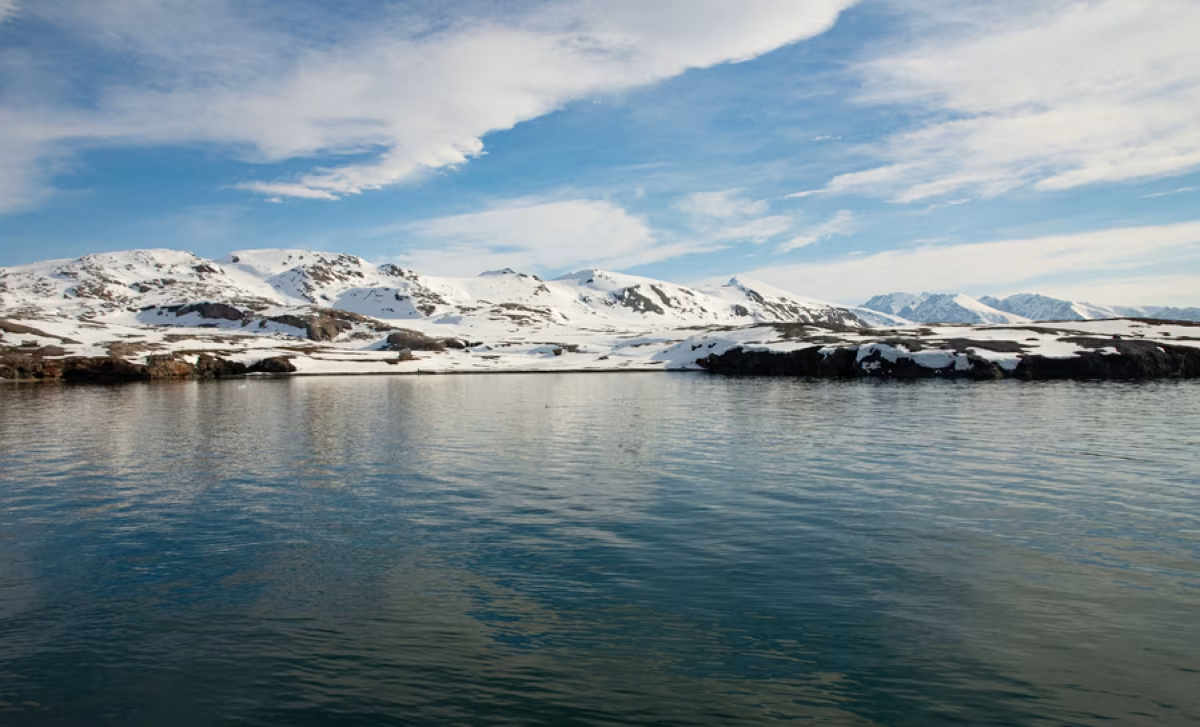
Due to the glaciers retreat in recent years, this former peninsula is now an island. The island is home to the old mining settlement of Ny London, where Ernest Mansfield, head of the Northern Exploration Company, dug marble in 1911. Unfortunately for him, the marble was of such poor quality that it was never a viable industry.
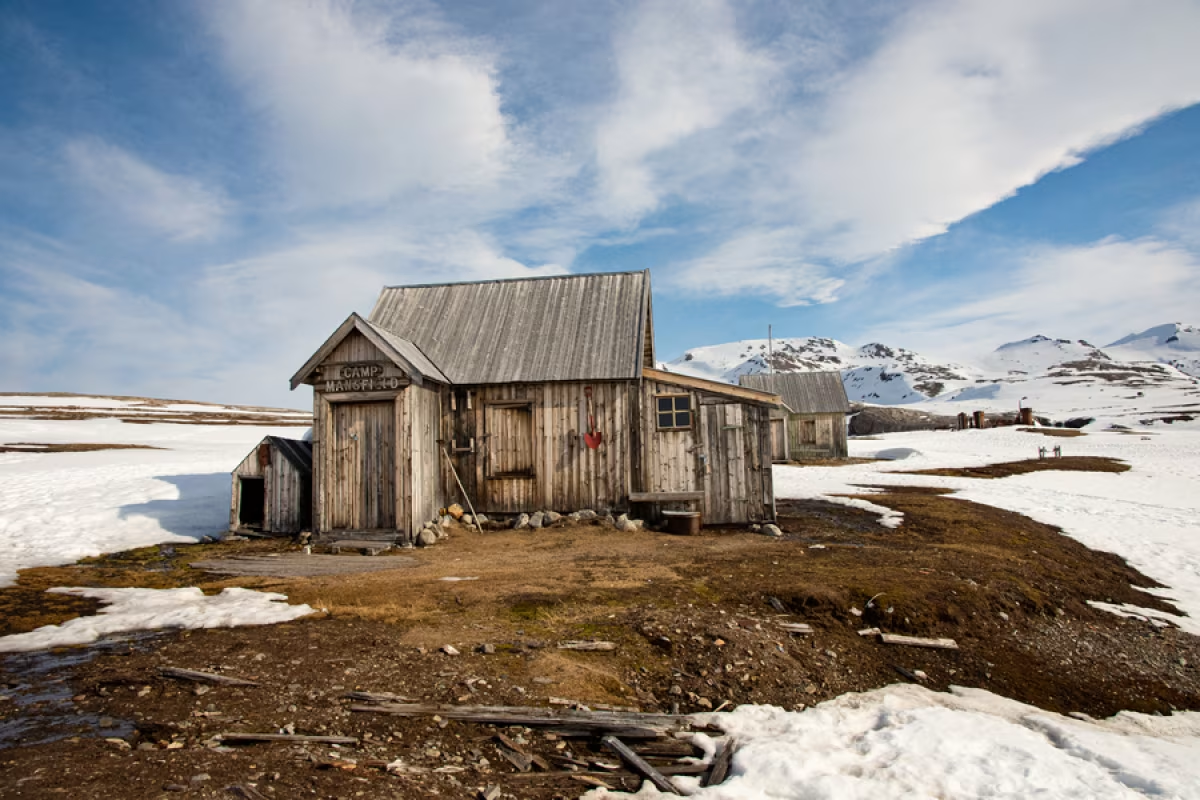
Historic buildings and machinery can still be seen scattered on the hill overlooking the bay, making for some amazing photos. I took full advantage. This is a great spot for gentle hikes and wildlife watching, and we enjoyed a wonderful round-trip hike (without snowshoes this time) up the hills and back to the beach.
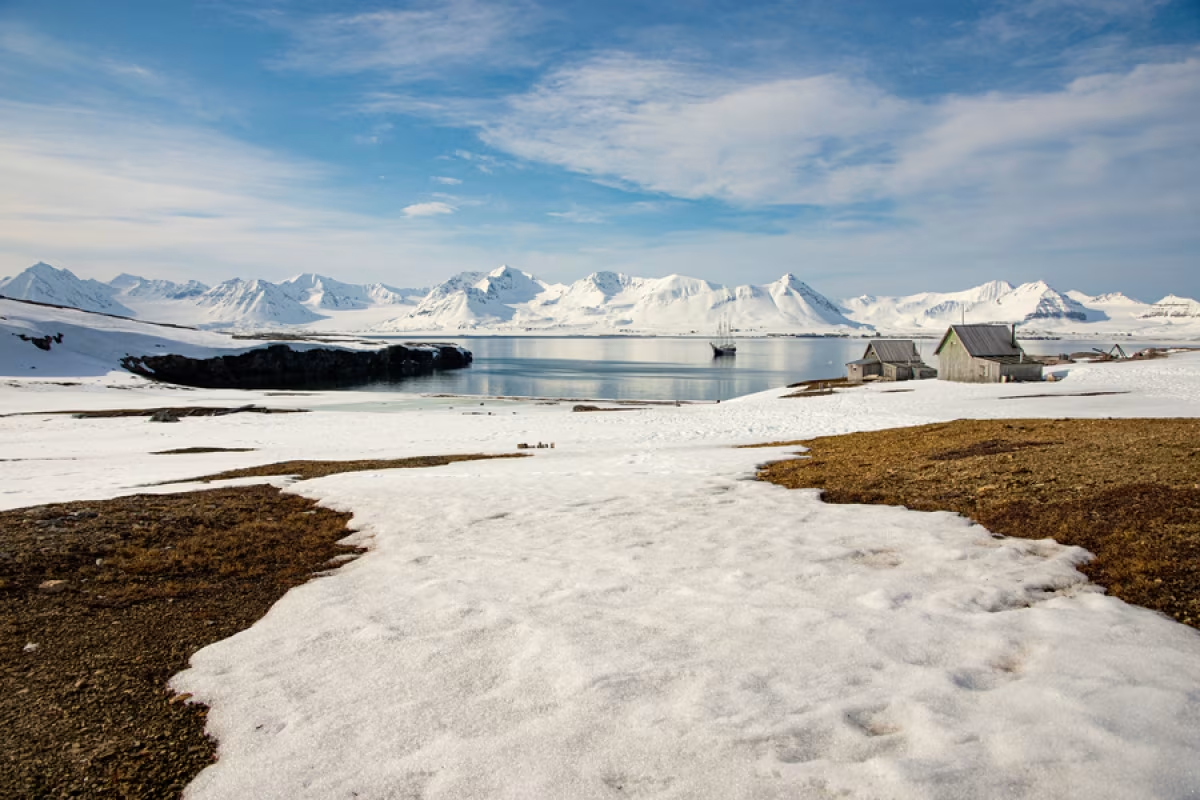
The landscape here is typical of areas that were glacier-covered during the last ice age, characterized by numerous large and scattered “erratic boulders.” These boulders differ in size and type from the rock native to the area, and have been carried by glacial ice, often over distances of hundreds of miles. They are indicators that mark the path of prehistoric glacial movement. The erratic boulders found here were transported by the glaciers surrounding Kongsfjord around 15,000 years ago. Their origin can be traced to the parent bedrock, allowing for confirmation of the ice flow route.
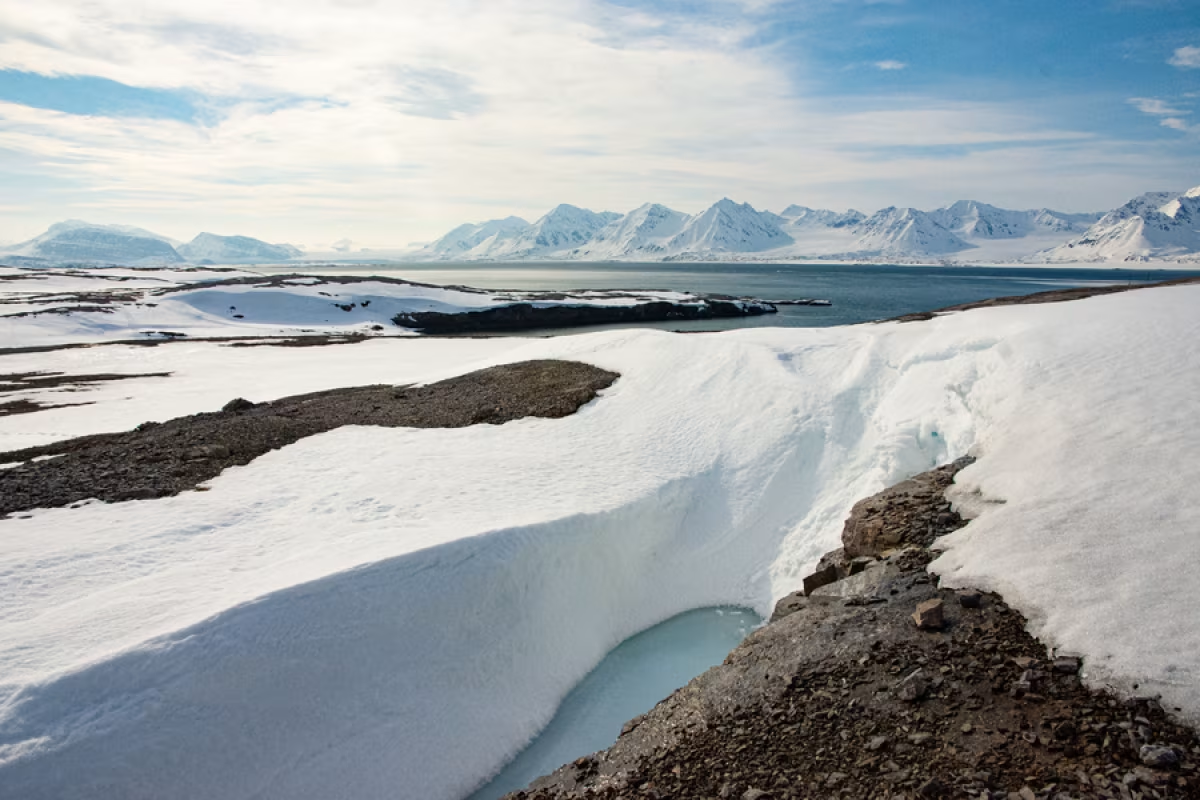
To my delight, we had the opportunity of approaching some hungry reindeer, taking advantage of the early summer foliage. Unlike reindeer on the mainland, Svalbard reindeer don’t have the luxury of migrating south when temperatures drop, so they have to endure the freezing Arctic winters.
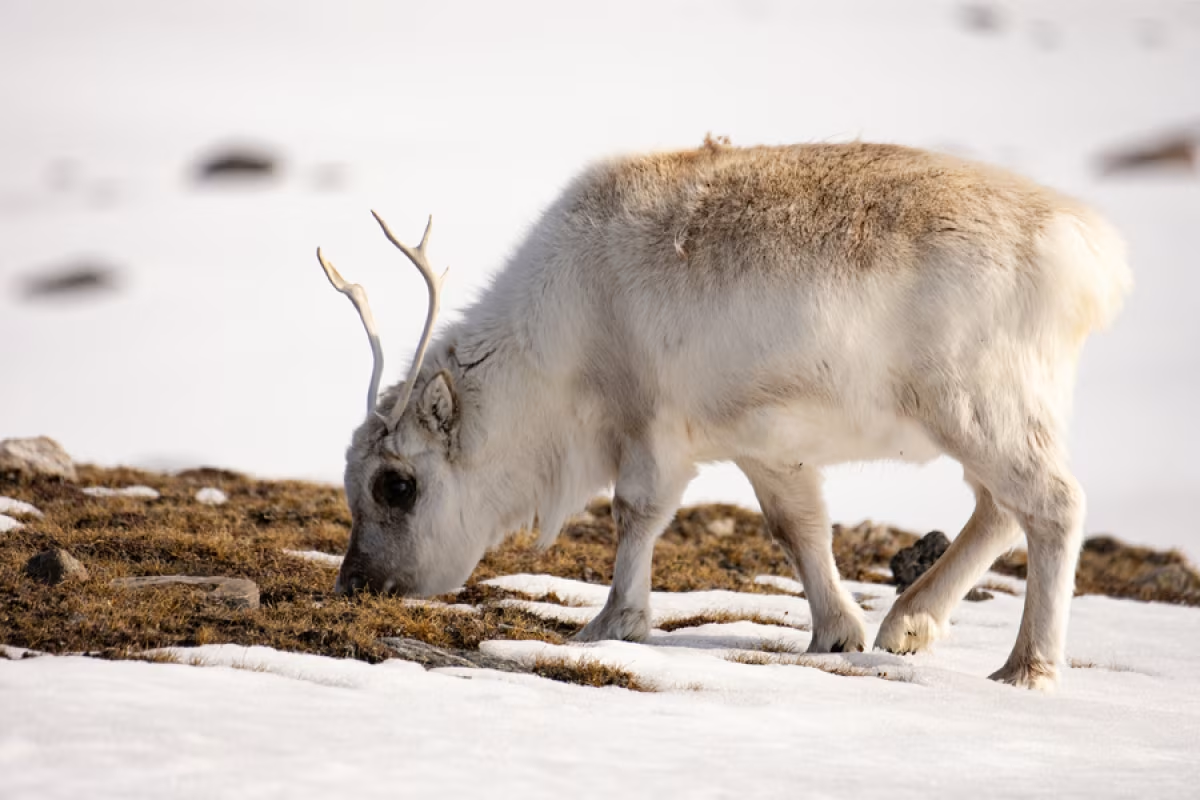
They have adapted to these conditions by developing a smaller stature. Many do not survive the winter, and we saw the remains of one that was not so fortunate. Those that do take full advantage of every opportunity they have to feed. Being consumed with eating, they paid us little attention as we approached them, and I was able to get some wonderful photos. Rounding another hill on our way back to the beach we encountered another small reindeer herd. An exciting morning.
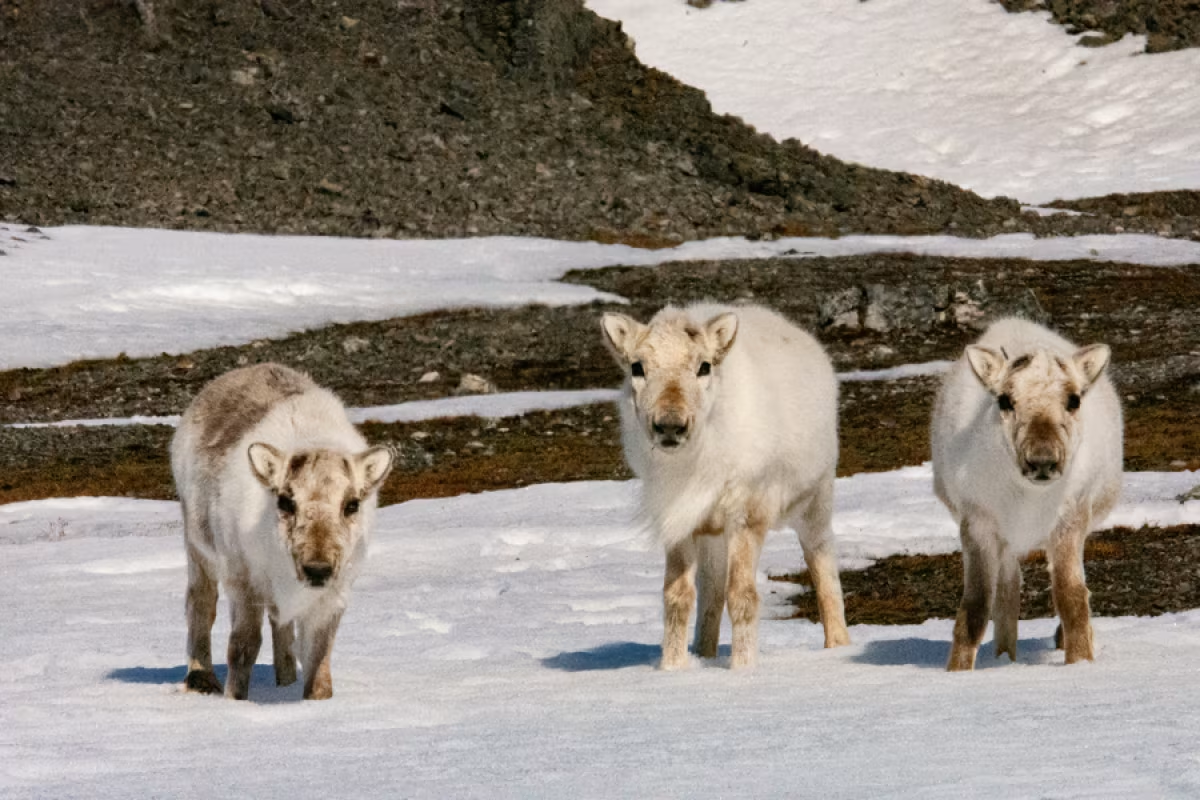
As we enjoyed lunch, the captain moved the vessel to the moorings at Ny-Ålesund, where we would disembark for the afternoon. This former mining town, which operated between 1917 and 1962, shut down in 1963 after a mining incident that claimed 21 lives. In 1966 the Auroral Observatory in Tromsø established a branch here, followed by the European Space Organization in 1967. In 1968 it was formally recognized as an Arctic research station, when the Norwegian Polar Institute started permanent research in Ny-Ålesund.
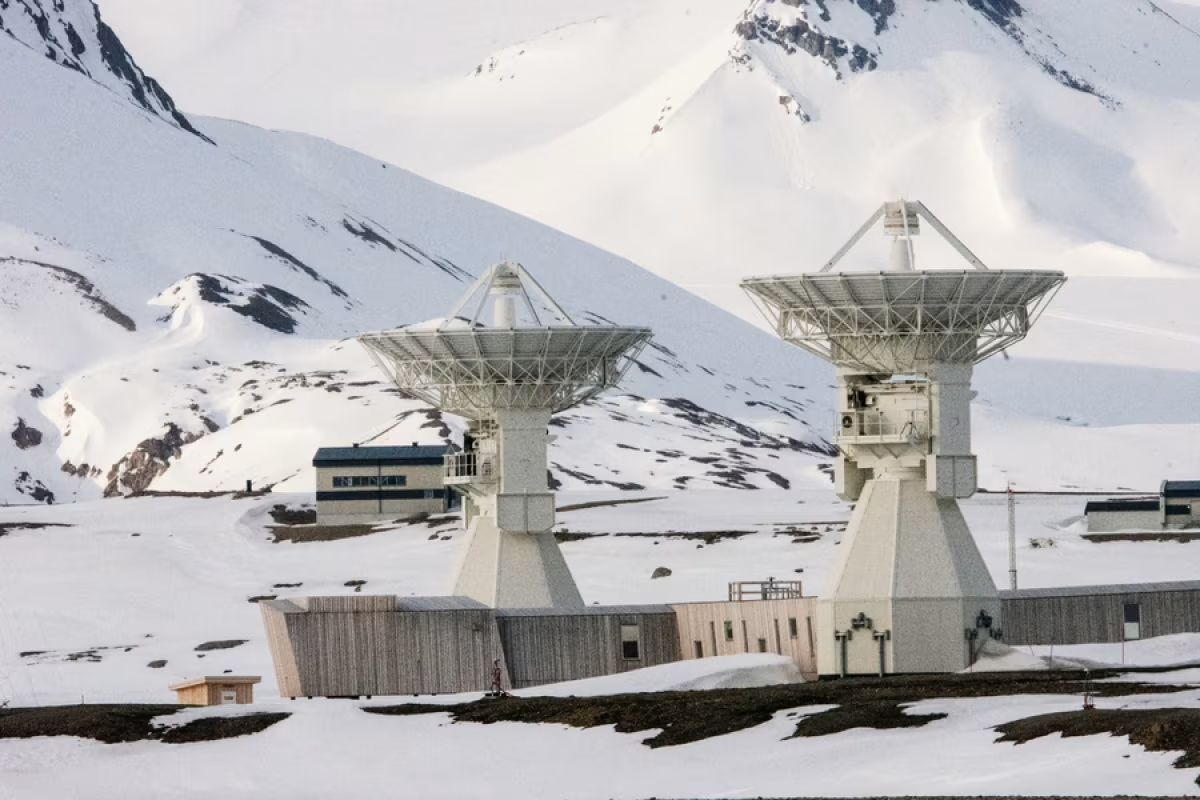
We visited the Mining and Science Museum where the most surprising thing I learned was that, as early as the 1930s, this tiny little town was a thriving tourist destination accommodating cruise passengers from Europe. We also visited Arctic Chinese Research Station, “Yellow River,” where a multitude of photos were taken of two lion sculptures guarding its doors. We then visited the souvenir shop and the post office, where countless postcards were mailed with polar bear stamps.
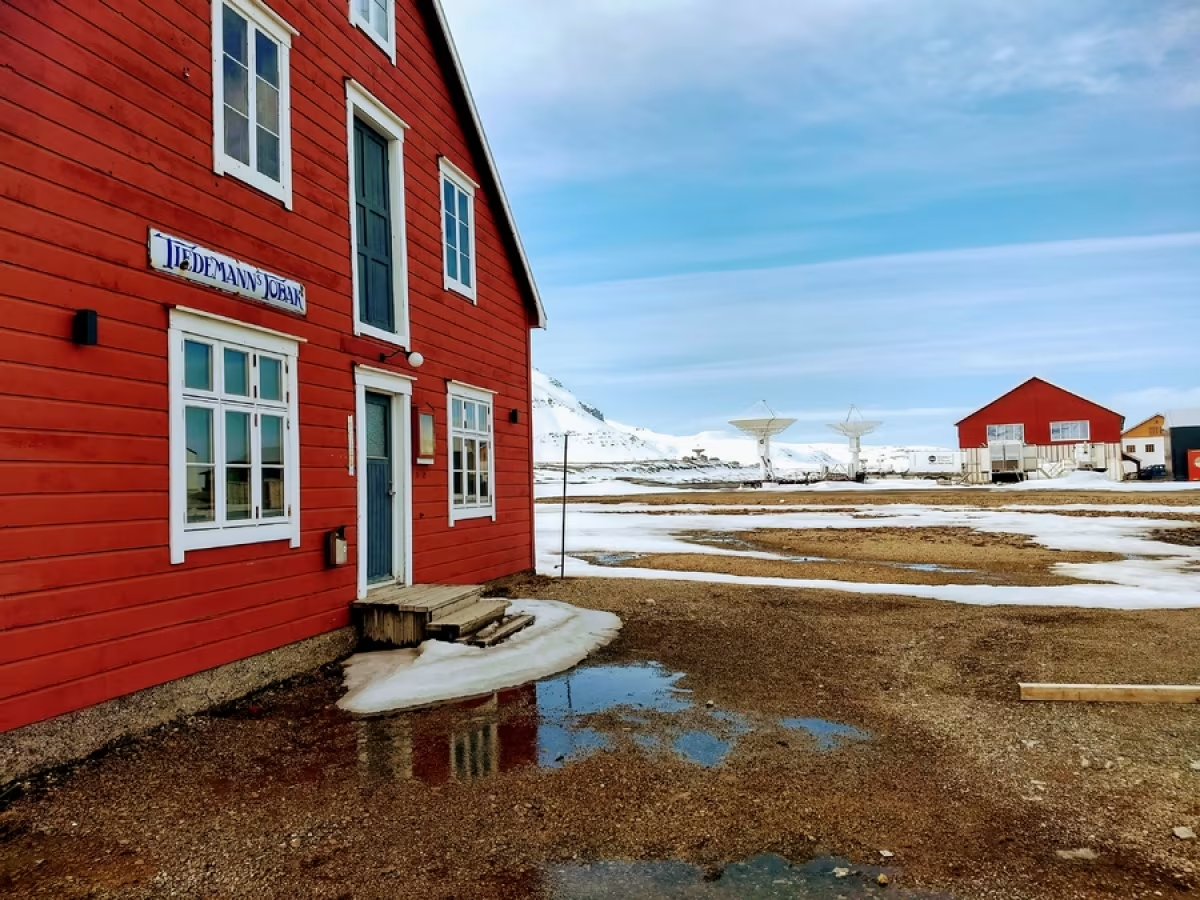
Once we’d concluded all our shopping and posting, we headed across the wet, snowy tundra to the famous airship mast, which marks the departure point for the Amundsen, Nobile, and Ellsworth airship – the Norge-1, which in 1926 flew across the North Pole from Ny-Ålesund to Alaska. Although they embarked on this first trip together, only Amundsen received the glory.
In 1928 Nobile prepared his own expedition, which ended in disaster, with Italia crashing in the pack ice and killing the six crew. A rescue expedition was launched to recover the men and ended up being the largest polar rescue expedition of all time. Sadly, Amundsen joined the search for Nobile and his men, using his own airplane, and was never seen again.
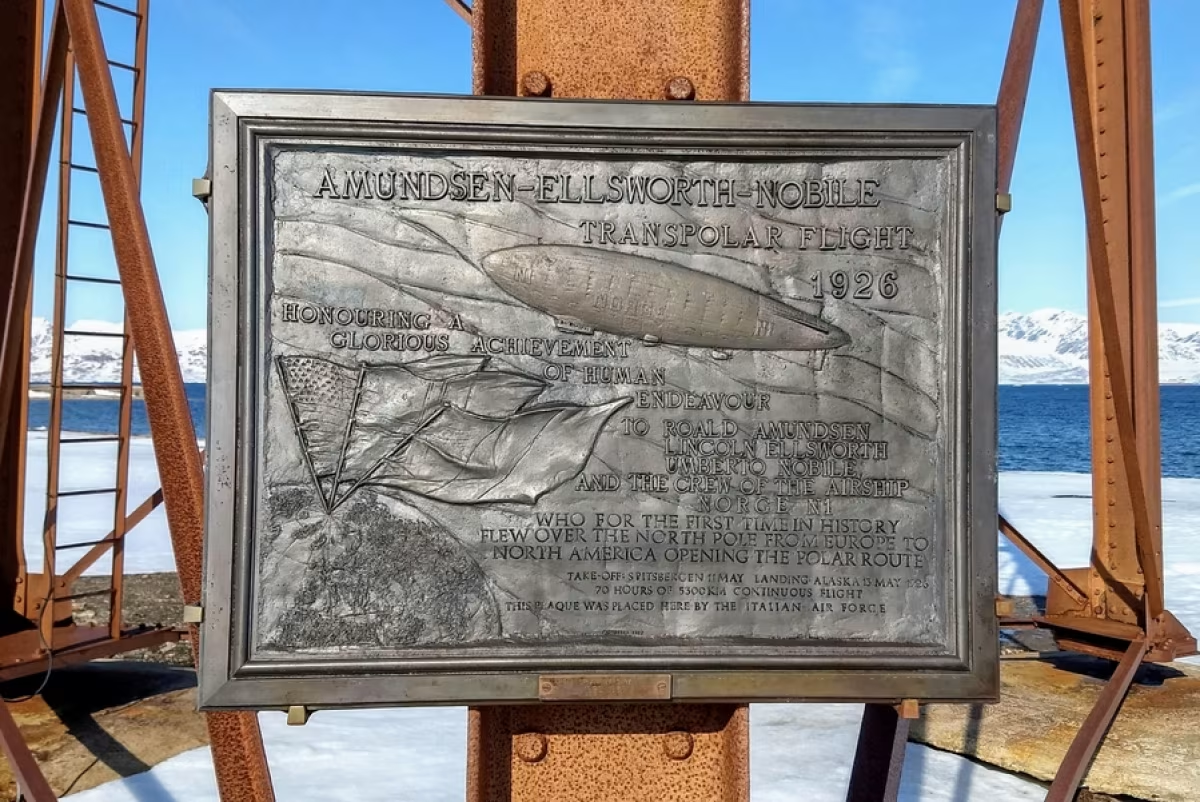
After our interesting afternoon in Ny-Ålesund, we let go our moorings and headed northward to cross the 79th parallel north before dinner. This would be our northernmost point before heading back to Longyearbyen, and it warranted a celebratory drink. My Chinese shipmates were always eager to share and introduced me to their version of moonshine. Things got pretty jovial, with “Gānbēis” (cheers, the one word Chinese I learned from this trip) all around.
After another glorious sleep aboard Rembrandt, I awoke on June 1 to yet another magnificent, icy, blue-sky morning (temperature 34°F – 36°F, position 78° 36.0'N 12° 33.0'E). Late the previous night we dropped anchor in Dalbreen, and the morning found us in an open bay, in front of the moraines of the majestic Dahl Glacier.
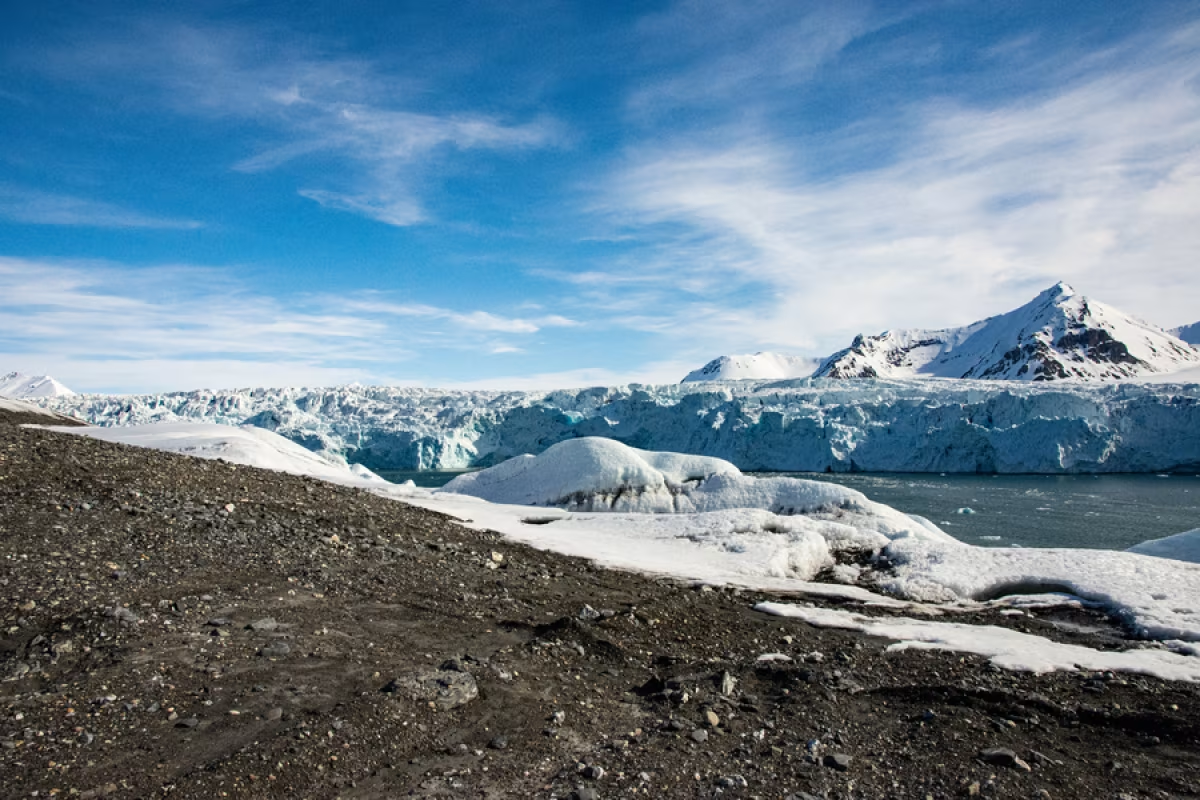
There was an otherworldly calm about the place. The silence was periodically broken by the haunting cry of the distant eider ducks and cracking sounds from deep within the glacier. Far off on the distant shore, a harbor seal was lazing on a rock.
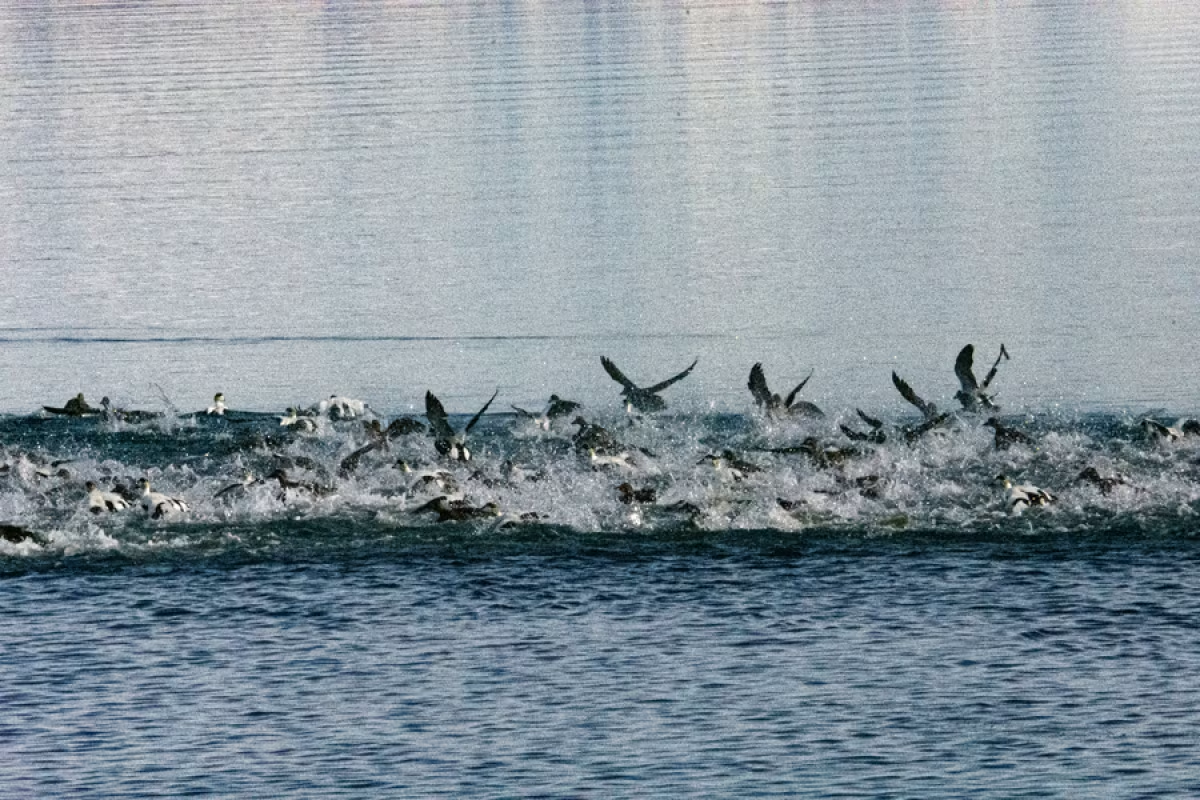
After our morning ritual of 7am breakfast, followed by a morning briefing, we boarded the Zodiac and headed to shore. We took a detour to inspect the harbor seal who, upon seeing us approach, quickly disappeared beneath the water.
We enjoyed a hike over the ridge of hills and moraines that have recently appeared from under the ice with Dahlbreen’s fast retreat. The elevated terrain offered endless views of the nine-mile-long Dalbreen and its calving front, which stretched out for 2.5 miles in front of us.

Behind us lay a beautiful bay and a tall ship. On the hilltops and out of the shelter of the moraine, the icy wind whipped our hands and faces, while the glacier creaked and cracked before eventually calving into the sapphire blue waters of Forlandsundet.
After an invigorating hike, we enjoyed an exciting Zodiac cruise along the glacier front and icy cliffs of the frontal moraine, maneuvering through brash ice that carpeted the sea surface. We were privileged to see several calvings on our cruise, but kept a safe distance to avoid the wake. We even hauled in two large blocks of ice that we would use later, chipped into our evening cocktails.
After our exciting morning, we returned to the vessel for lunch, while the captain moved us to our afternoon anchorage, off the beach at Poolepynten. Poolepynten lies on the eastern shores of Prins Karls Forland, an island west of mainland Spitsbergen. I was super excited for this next stop, as it was known for being a walrus haul-out.
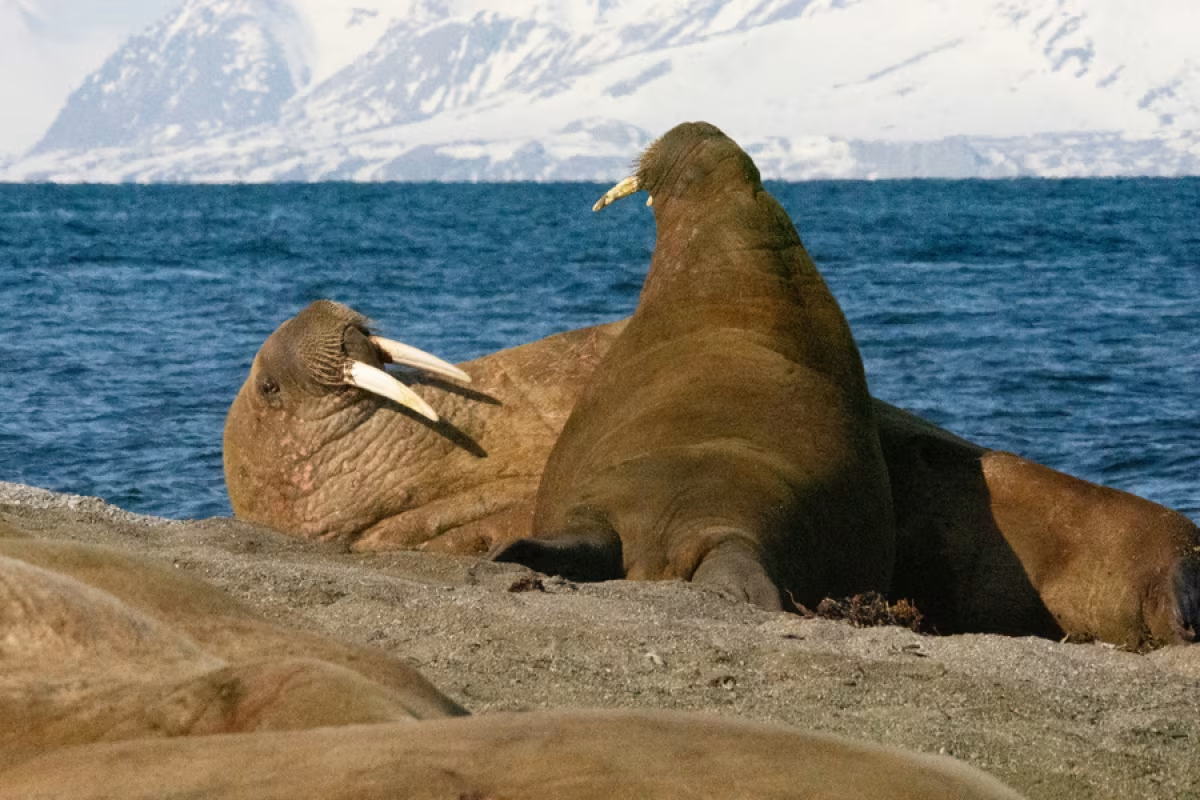
The island’s long gravel and sand beach stretched offshore over large areas of shallow water, providing a perfect muddy habitat for the numerous shellfish on which walrus feed. After feeding, they laze about in tight groups while digesting their catch, providing wonderful photo opportunities for cruise passengers like ourselves, and as the Rembrandt approached we saw just such a large group lolling on the beach.
After donning our life jackets and boots, we headed eagerly for the Zodiac to transport us to the beach. It was a beautifully warm (relatively) and sunny afternoon with a light breeze, perfect beach weather (LOL).
For a treeless island, I was surprised at the large amount of driftwood that was strewn across the beach. This wood apparently drifts in with the currents and pack ice from the Arctic Ocean, and originates from the coasts of Siberia, the High Arctic Islands, and Greenland.
In order not to alert the walrus, we had to approach with caution – quietly, in a straight line and all moving in unison. Eventually we stopped within about 90 feet of them. All the walrus on this beach were males. While males congregate on the western side of Spitsbergen, females and cubs hang out along the eastern and northern coasts.
Initially they just lay there, not doing very much of anything, but nevertheless it was still extremely exciting just to see them up close. Our guides explained that this behavior was typical and that we shouldn’t expect much more action.
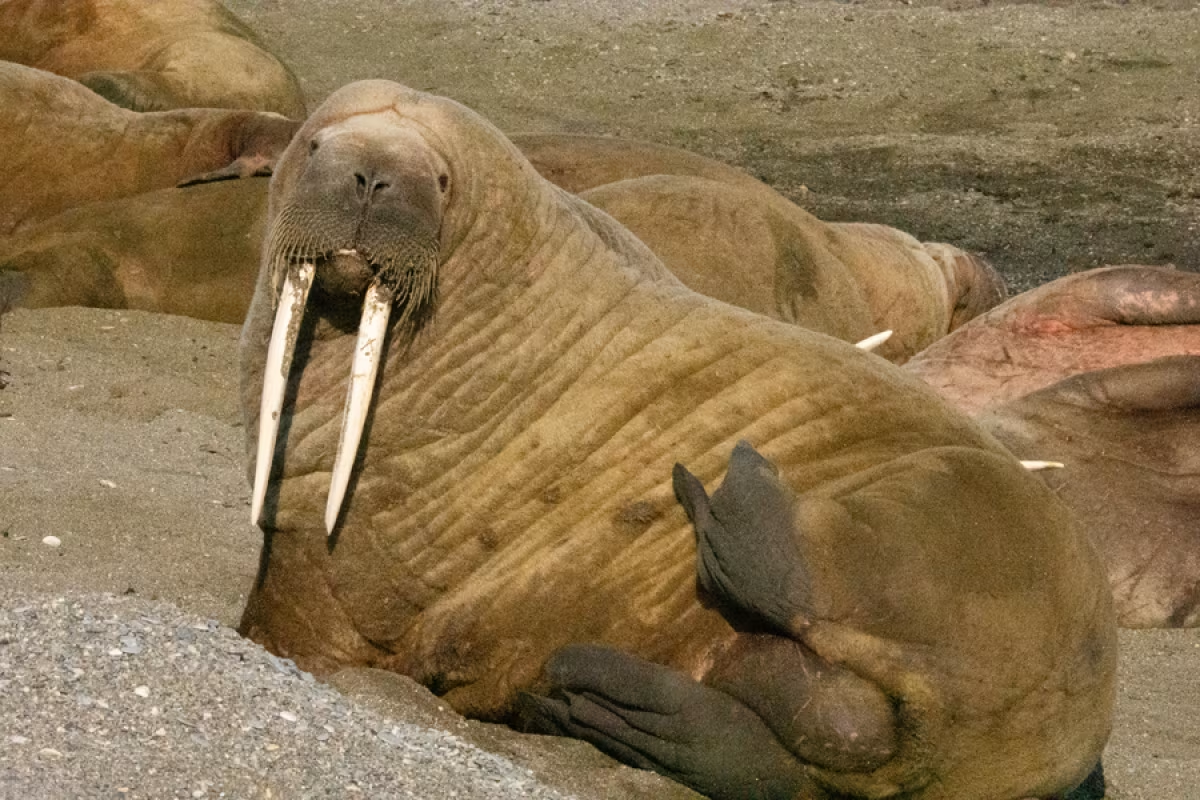
However, as was the norm on this trip, we got lucky. While we were standing around and snapping away, a few walrus that had been out in the ocean approached the beach, where they started play-fighting in the surf. There was a lot of splashing and thrashing about, making for some great action shots. All in all, we had a very entertaining afternoon, and it definitely proved to be one of the highlights of the trip.
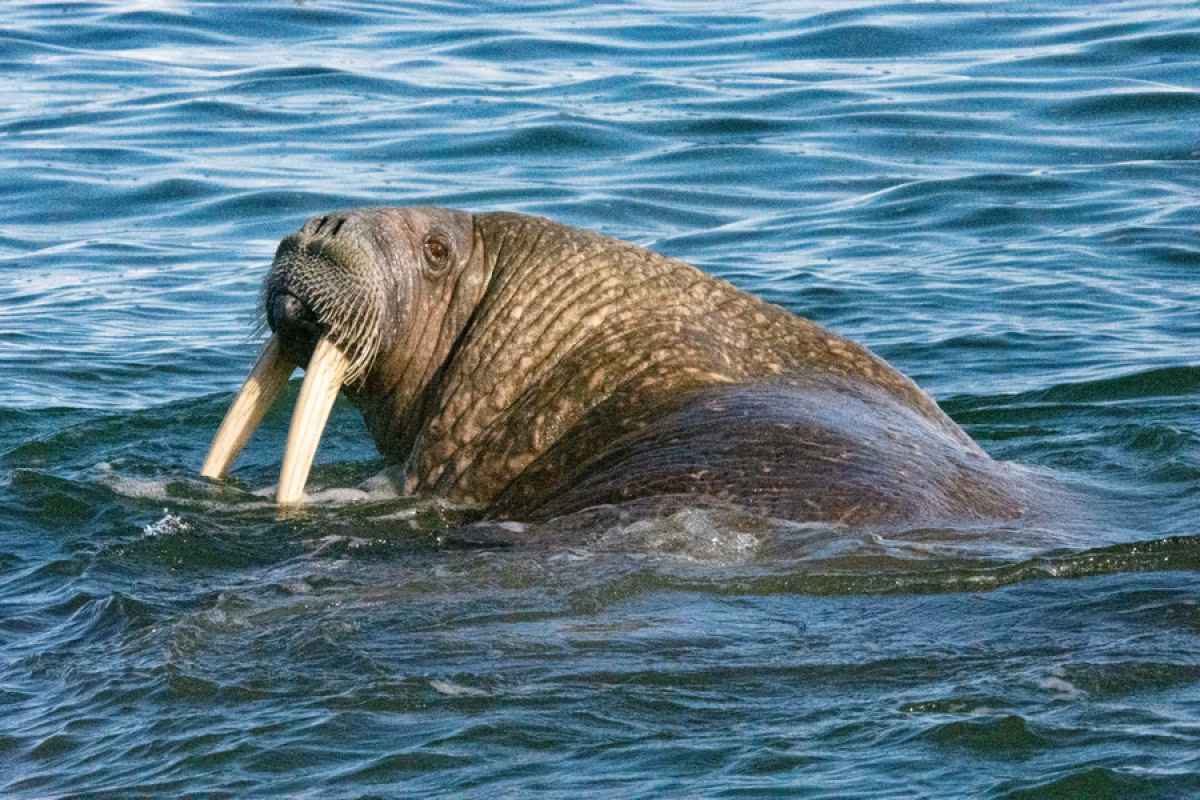
Besides its walrus, the island is also a stopover point for many migrating bird species. One that deserves special mention is the Arctic tern. One of the guides, Eduardo, alerted us to these special creatures on the beach, as he shouted out excitedly upon seeing one.
Unfortunately, no one else understood his enthusiasm until watching a documentary later than evening. These impressive little birds undertake the longest migrations known in the animal kingdom. They see two summers each year as they migrate from their northern breeding grounds in the Arctic, all the way to the Antarctic coast for its summer, and then back again about six months later. The average roundtrip is a whopping 44,100 to 56,000 miles, depending on where they nest.
The island also represents a historical highlight, as Prins Karls Forland was one of the very first places in Spitsbergen seen by Willem Barentz, the official discoverer or Svalbard, in June, 1596. In the 17th century, a small whaling station ran on its northern shores, and later it was also home for Norwegian hunters.
After returning to the ship, we heaved anchor and continued our journey south, back to Isfjord. Tomorrow, our last day on board, was sure to bring even bigger and better adventures.
The morning of June 2 found us in Ymerbukta, anchored in front of the 9.5-mile-long Esmarkbreen Glacier (temperature 28°F to 39°F, position 78° 16.0'N 14° 00.0'E). The bay is named after Ymer, a giant in Norse mythology, and the glacier derives its name from Jens Esmark (1763-1869), a mineralogy professor at Oslo University.
It was another tranquil morning in Isfjord. The sea mirrored the azure blue sky, while an occasional chunk of floating ice broke the surface. Hundreds of common eider ducks sat along the edge of the fast-ice shelf or paddled around happily in the icy water, while in the distance walruses lazed in the morning sun.
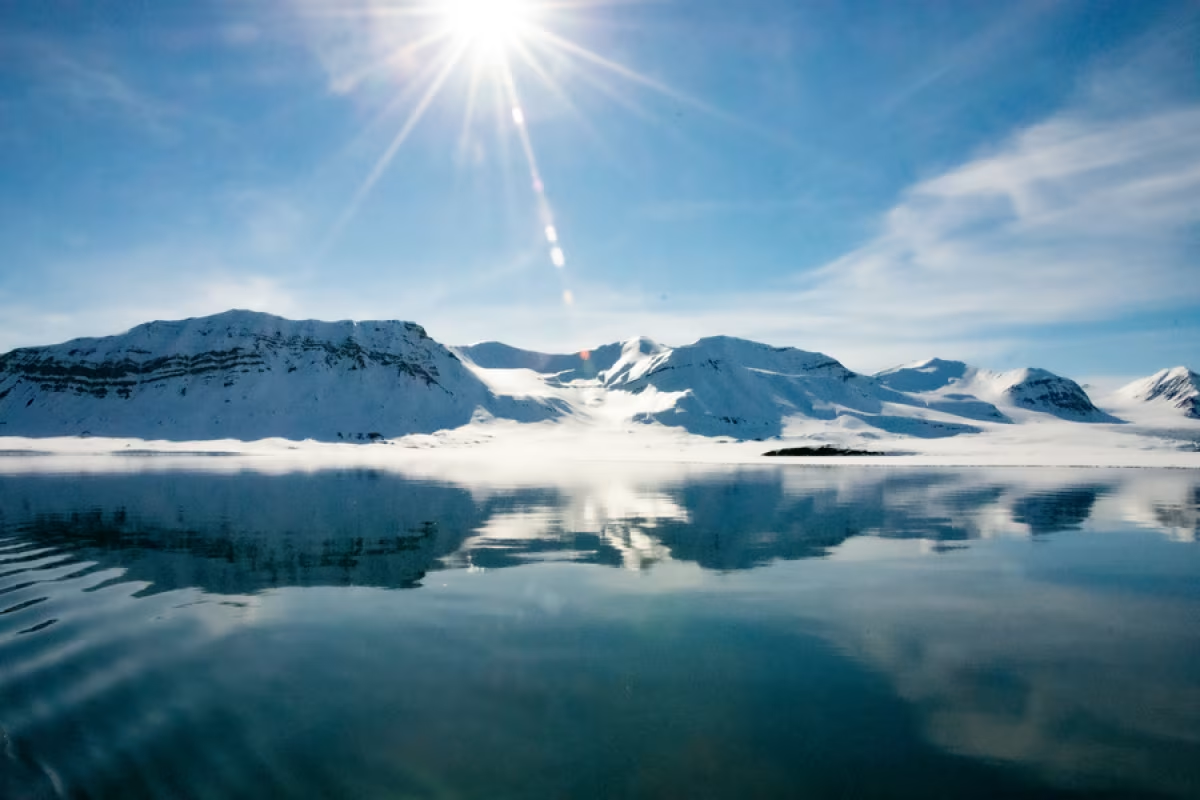
I pasted this beautiful scene into my memory (and my memory card). It was sad to think this would be my last morning in this mesmerizingly beautiful place. I felt so privileged to have woken early to see this scene, which most of my fellow guests had missed. With the change of the tide, the fast-ice sheets were pushed off to sea, and before breakfast we were forced to heave anchor and move Rembrandt out of the path of the drifting ice.
After breakfast, and for the last time, we took the Zodiac to our final landing spot before heading back to Longyearbyen. Here on a calm beach, we once again donned our snowshoes for a climb over the rocky ridge that separates Ymerbukta from its neighbor Trygghamna, a bay that translates as “safe harbor.”

Climbing up the snow-covered slopes, we spotted our first solitary Arctic fox in the distance. Shortly afterwards, and to all of our delight, on the rocky slopes above us our guides pointed out a couple of fox pups resting under a rock. They were so well camouflaged that I don’t think we would have spotted them without the keen eyes of Jordi and Eduardo.
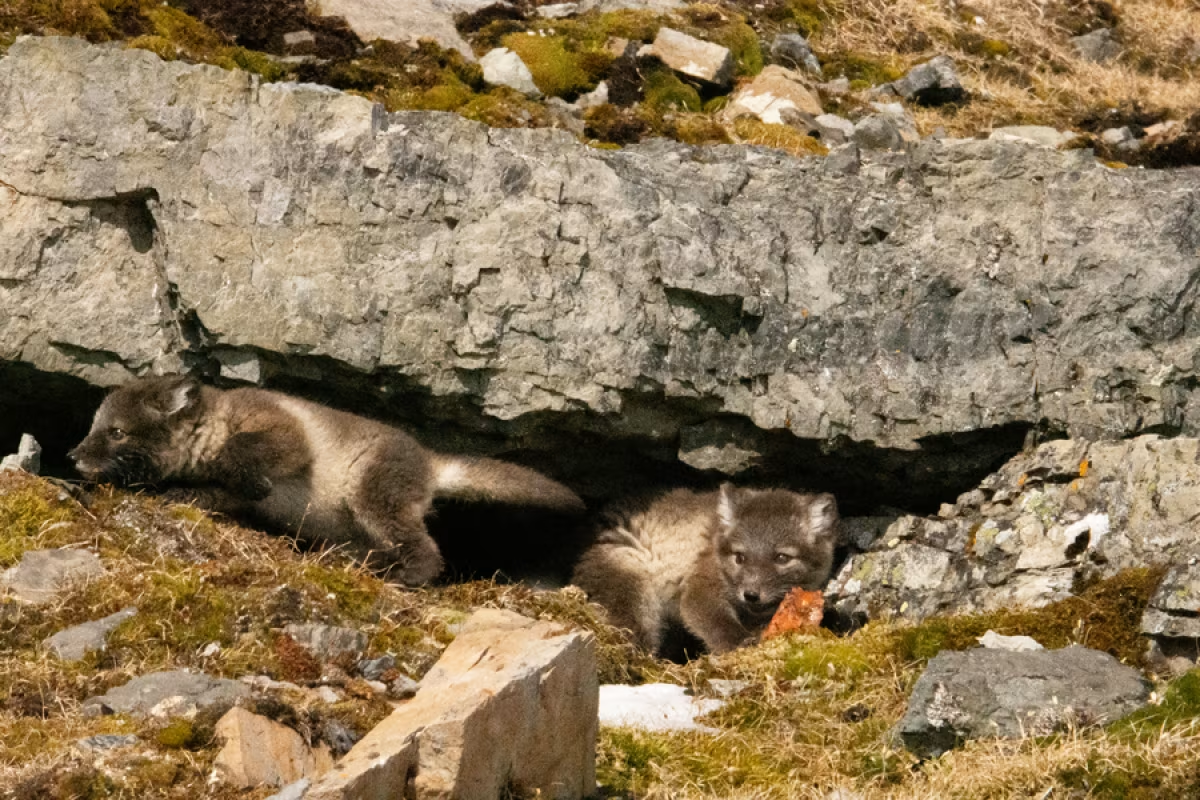
In hushed anticipation we waited, hoping the foxes would come out into the open. It didn’t take long to pique their curiosity, and one by one they emerged. Soon there were six Arctic fox pups! They had us enthralled, especially the one feeding on and jealously guarding black guillemot carcass, growling every time one of its siblings tried to emerge from under the rock beside it.
We spent a considerable amount of time observing them and taking pictures. Our guides were quite surprised by their presence, and explained that it was very early in the season to see Arctic fox pups of this size. They attributed it to the uncharacteristically warm weather that the archipelago had experience in the last few weeks. Once again our luck prevailed, but perhaps at the expense of the planet.
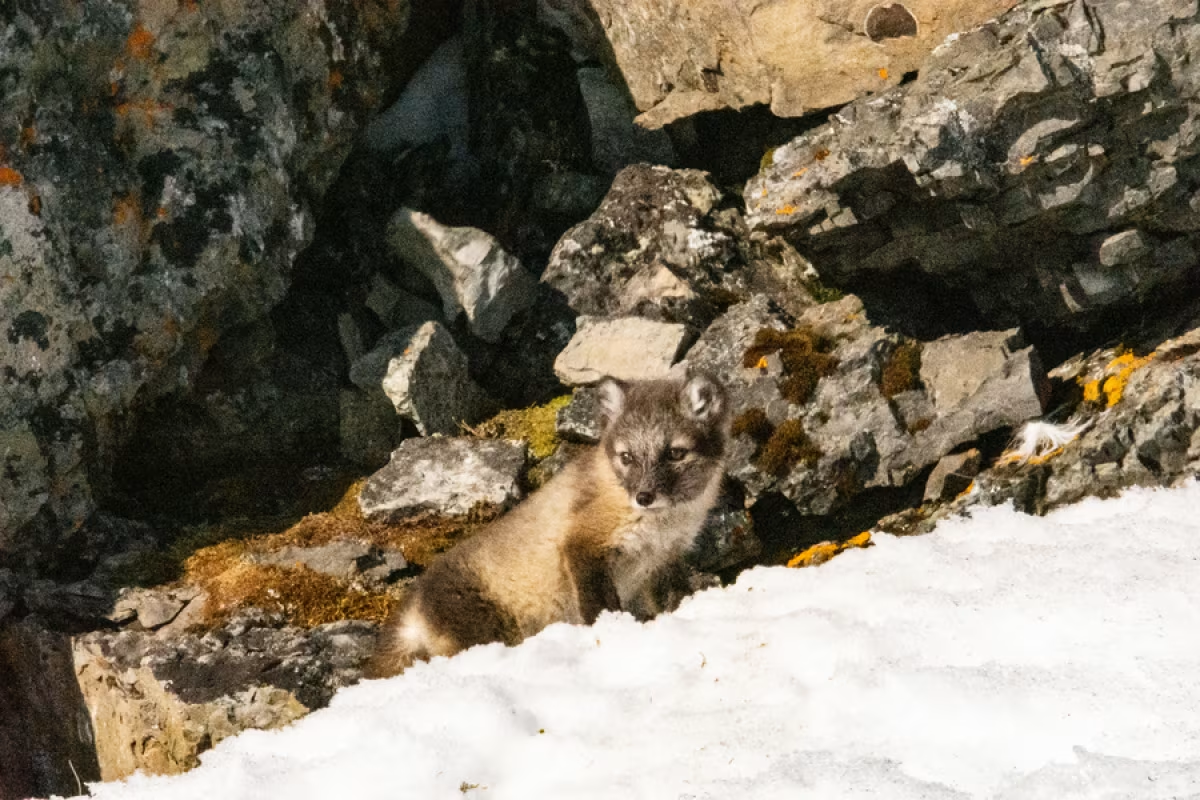
When we’d had our fill, we resumed our hike along the rocky ridge called Varmlandryggen. The ridge is made up of steeply dipping sedimentary layers that span a time from the Permian (around 250 million years old) to the lower Cretaceous Period. In many of the deposits it is still possible to see fossilized remains from what was originally the sea bottom. These consist of shells, brachiopods, corals and other marine creatures.
We eventually summited the ridge and were greeted by a group of curious reindeer and a spectacular view of the neighboring Trygghamna Bay and its mountains. From this elevated vantage point, we could almost see the whole of Isfjord, with Alkhornet’s vertical cliffs towering in the distance at the opposite side of the fjord. From whaling times, this landmark was unmistakable and signified the mouth of Isfjord, its sheltered bays, and the Longyearbyen settlement.
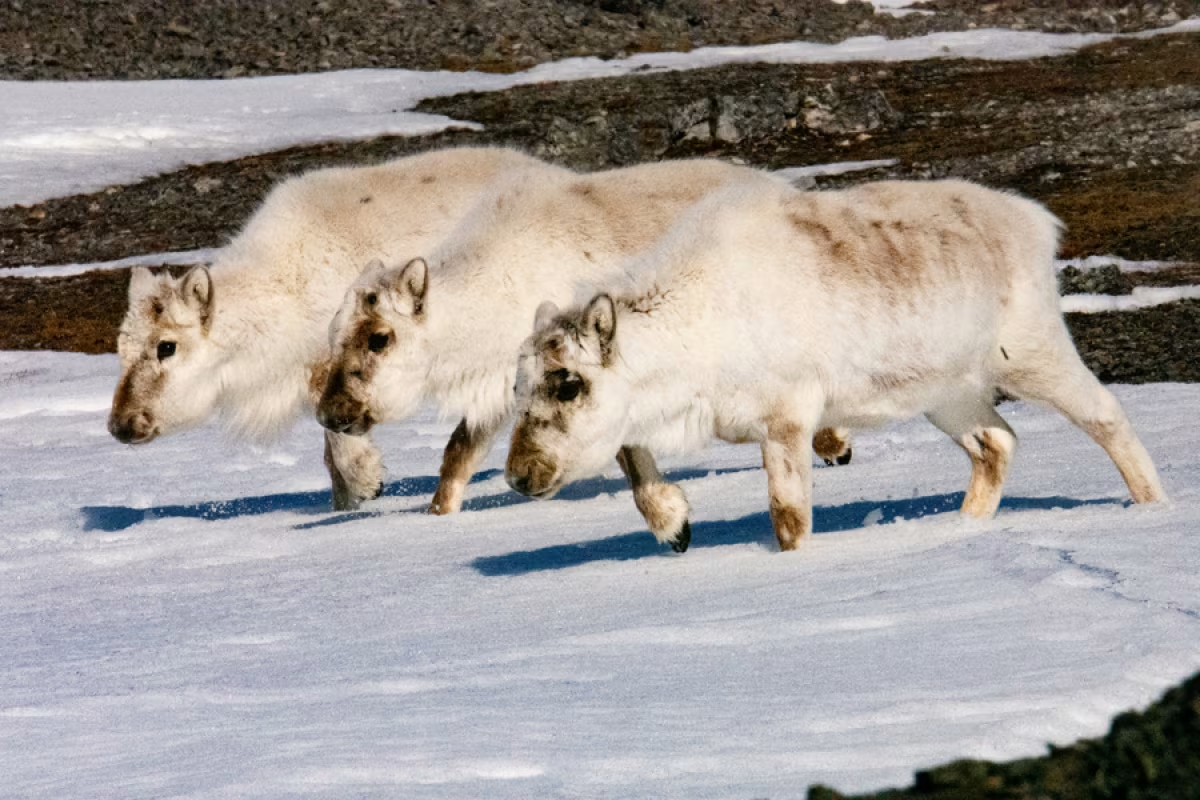
After taking our fill of the beautiful weather and scenery, we made our way back down to the ship. Before reaching the shore, however, we had yet another surprising and somewhat amusing wildlife encounter.
Jordi and I were walking out ahead of the pack when we spotted a pair of ptarmigans feeding on a patch of vegetation out in the snow. Typically these birds are shy of humans, but upon spotting us, this pair made a beeline straight for us. They seemed incredibly curious about our presence and walked to within a couple of feet of us before losing interest and deciding that another patch of vegetation was far more interesting.
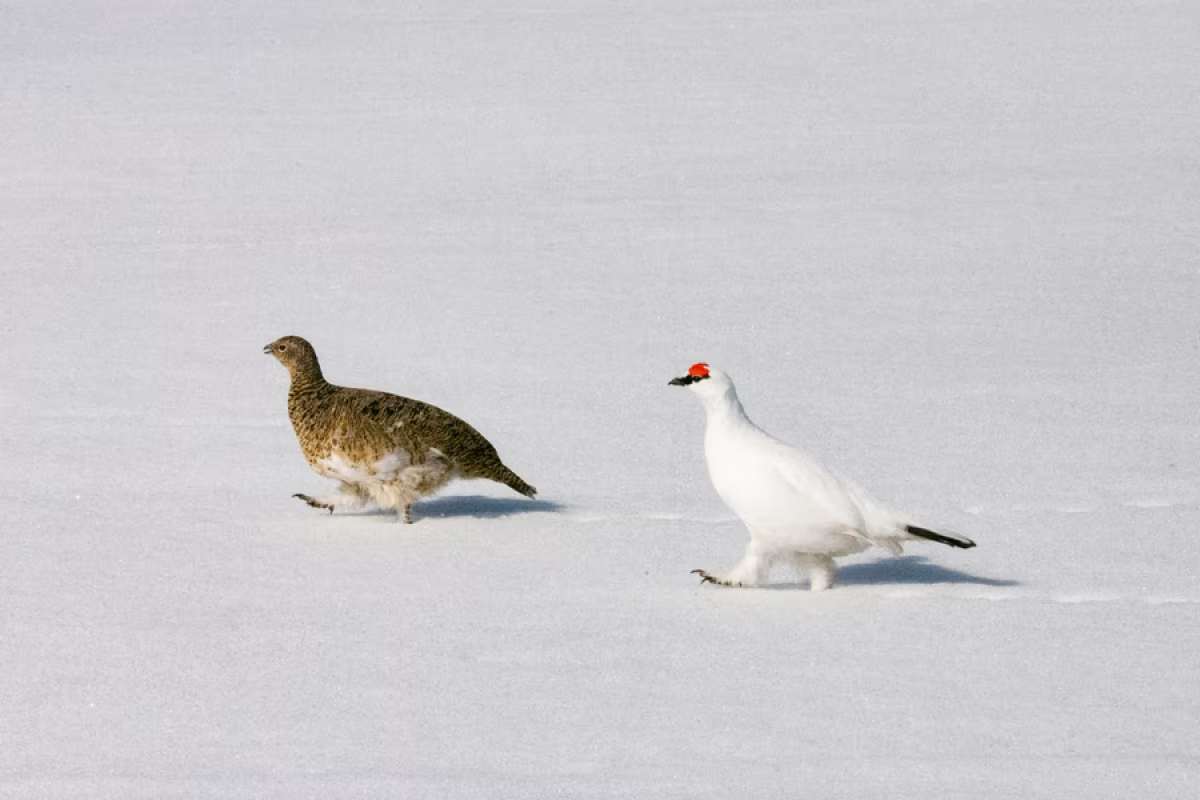
Rembrandt lay perfectly mirrored, close at anchor, and soon we were on our way again. If it was possible to believe, the afternoon brought calmer conditions than the near-perfect morning, offering surreal reflections of this white land in the deep blue glacial waters of Isfjord. It afforded us the opportunity to explore deep into several of the glaciers on Isfjord’s northern shores.
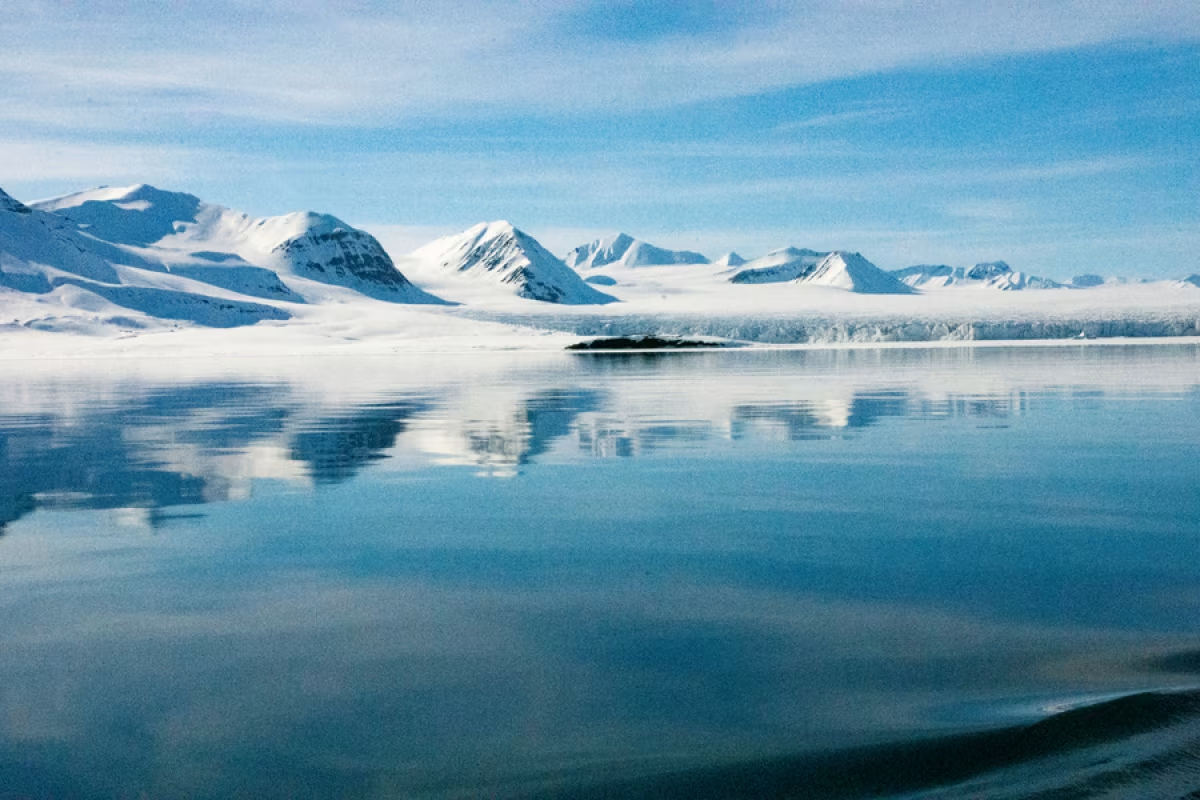
We scouted for wildlife amongst the broken fast ice that, due to the fast rising temperatures, had broken off the extensive ice sheets in the past few days. It provided ideal resting grounds for the walrus as well as the multitudes of eider ducks, Brünnich’s guillemots, and black guillemots, who were taking full advantage of the new ice situation.

Eventually Rembrandt turned around and headed for Longyearbyen on the last leg of our journey.
I greeted June 3 with both excitement and also a heavy heart. Bidding farewell to this incredible corner of our planet, this beautiful ship – my home for the past five days – and its welcoming crew, which I now considered friends, was not going to be easy. I was excited, however, at the prospect of going home and being able to share all I’d seen and discovered with colleagues, friends, and family. And as a photographer, I also wanted to see my photos in full size.
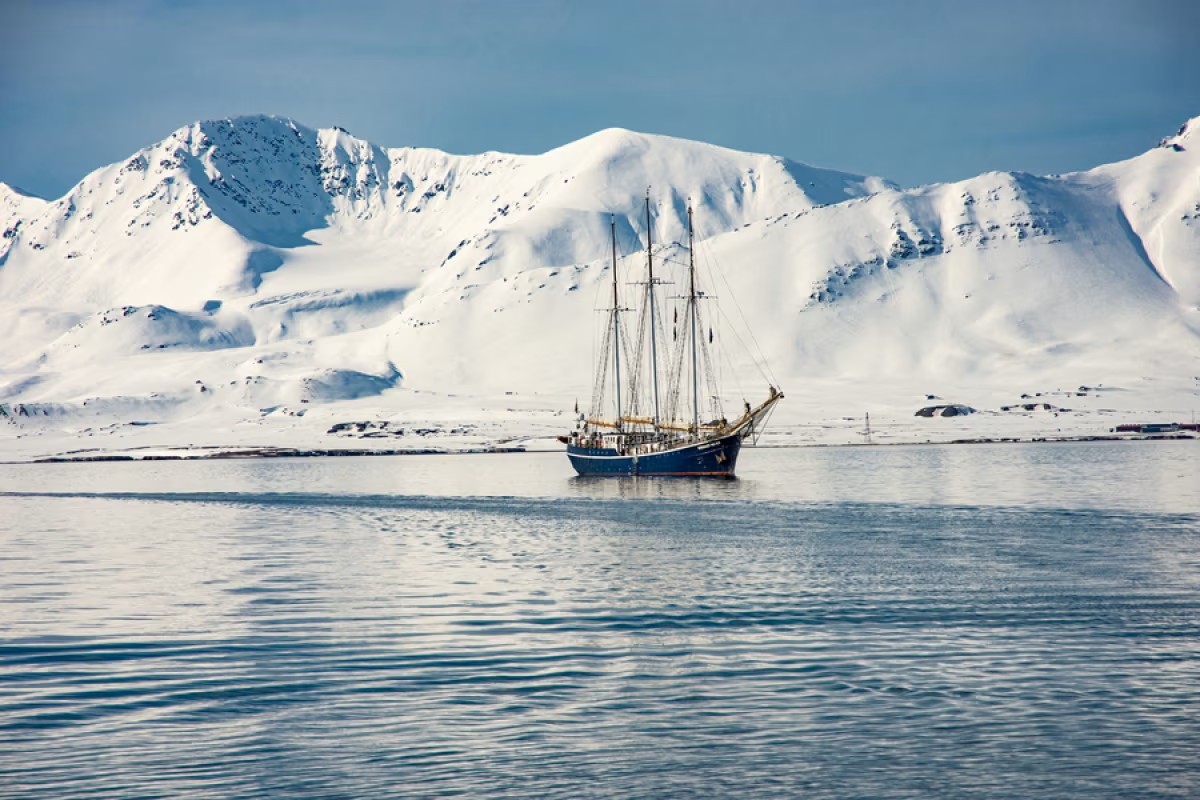
I came to Svalbard in search of wildlife, but I found so much more. Its majestic landscapes were more beautiful than I could have ever imagined, with its peak upon snow-covered peak stretching off into eternity, and its blue skies mirrored in its sky-blue waters. The solitude on those quiet mornings, before anyone else arose, calmed my soul. The icy cold was invigorating and made me feel alive. This place has touched and enriched my life in ways I could not have imagined, and I will definitely return one day.
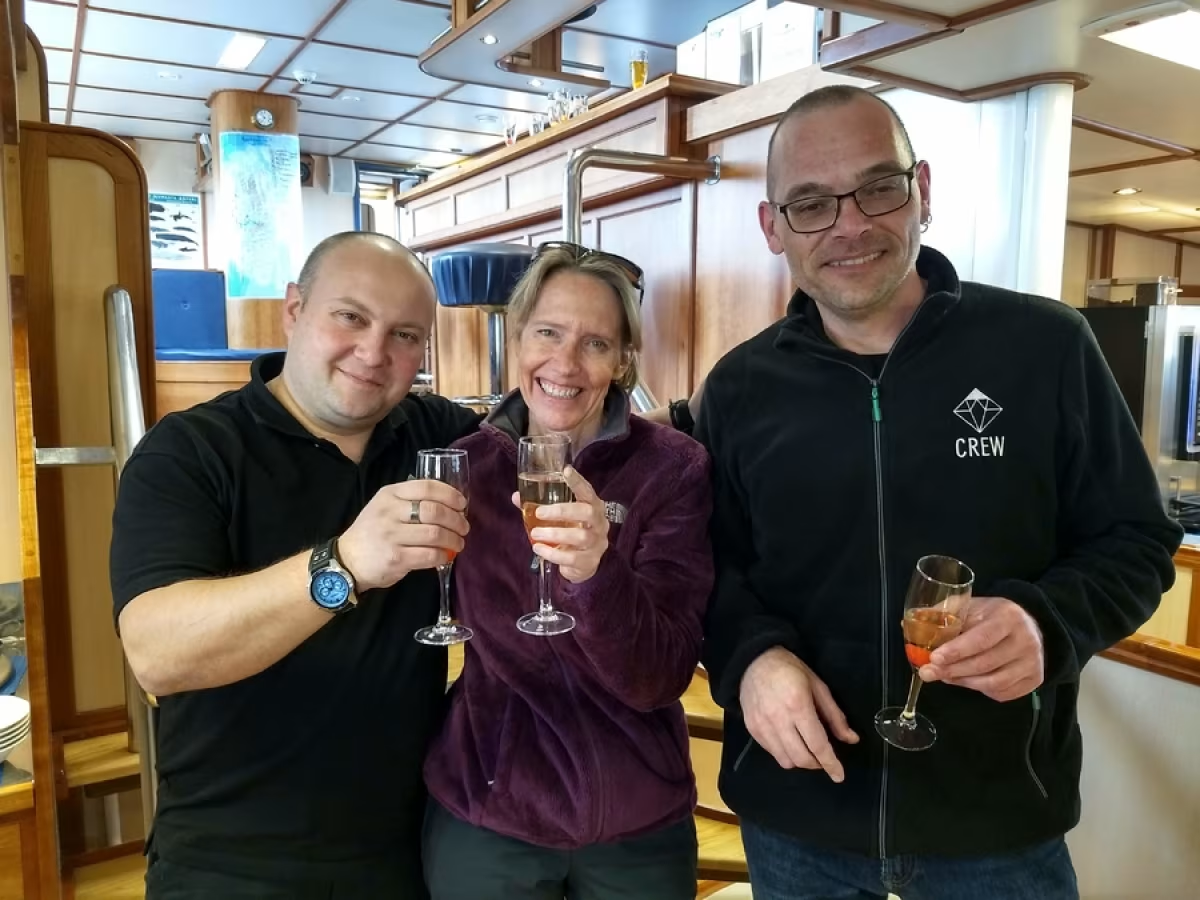
All images by Sarah Jane Laubscher



